|
A conversation with Ton Haak By Jessica Rath This is another chapter of Abiquiú’s more recent history, about a couple from the Netherlands who lived here for twelve years, from 1997 to 2009, and left quite a mark on the region: Ans Zoutenbier and Ton Haak. They ran The Tin Moon Gallery across from Bode’s, which some of you will remember as the Rising Moon Gallery, the name Jaye Buros and Bill Page gave it after they took over from Ans and Ton. “A couple from the Netherlands” – why were they in the United States, and how in the world did they land in Abiquiú, of all places? I was curious. Luckily Ton, now back in Holland with his wife and living near The Hague, agreed to a Zoom meeting. First of all, I wanted to know how they ended up in the United States to begin with. Well, I was surprised to learn that it all started with the Saturday Evening Post – a (then) weekly magazine which dates back to 1821 and Benjamin Franklin. When Ton was eight or nine years old he received the Post every week from neighbors whose son worked in the U.S. and sent copies to them. They couldn’t read English. They looked at the pictures and then passed it on. Ton was fascinated – this was in the 1950s, and images of big Cadillacs, fancy refrigerators, and television sets were immensely impressive. Many advertised items simply didn’t exist or were extremely rare in post-war Europe. He loved the cartoons too, and Norman Rockwell’s paintings on the rear cover. When Ton was in high school and had become quite fluent in English, a teacher took his class to the American Embassy in The Hague, which was a friendly place at the time where everybody could easily walk in and out. It offered a library with lots of American literature and magazines, including Playboy – a favorite of the male high school students! The librarian had to eventually establish a rule that all magazines had to be checked, to make sure that no centerfolds had been torn out. Even after he got married to Ans and had a successful career as a graphic design executive and art festival organizer he pursued his love of America, and every year’s vacation (which is some five weeks in Europe!) took them across the ocean. They also spent a six-month sabbatical in Carmel, California, and later traveled all over the state and to Arizona as well. “When one day in 1992 we were in Big Bend, Texas, hiking, we decided to move to America,” Ton told me. “We sold our house and finished our businesses in March 1994, and we had enough money to live on for four to maybe six years. We didn’t settle yet, we just traveled and visited all the states west of the Mississippi, renting cabins, camping out, staying in pop-and-mom motels. We traveled the whole length of the border with Mexico, rented a house in Tucson for five months, and we lived in Nanaimo for a while, which is on Vancouver Island in Canada.” Ton went on: “For a short time we lived in Matfield Green, Kansas, because when still in the Netherlands I had read William Least Heat-Moon's book, PrairyErth. He investigated just one county smack in the middle of the United States, Chase County, Kansas, cattle country, the last remaining tallgrass prairie. The book was so fascinating that we wanted to visit that particular place. When there, we met people we had read about in the book, especially Jane Koger, a rancher woman who owned 7,000 acres and ran 300 beef cattle. She became one of the most successful ranchers of Kansas and quite a famous figure in the heart of the Heartland. We rented a cabin there because we fell in love with that area, then after a few months we continued to travel and eventually made it to Santa Fe. And by the end of 1997, our travels came to an end and we settled in tiny Abiquiú, deep in the beautiful red rock desert in northern New Mexico. Ans and I started The Tin Moon Gallery but we decided not to carry art related to Georgia O'Keeffe, because everyone was doing that already. So, we focused on other artists, contemporary artists who lived in the area. And we added sellable stuff, like contemporary jewelry and pottery – among others from Jan Gjaltema (a jeweler from the Netherlands living in Mexico), Abiquiú jeweler Tamara Kay, Amber Archer, and Dick Lumaghi – and the gallery became a success.” The Tin Moon – why did you choose this name, I wanted to know. “Ans planned to study Spanish at the Community College in El Rito”, I learned. “She had signed up for the course, but the class was canceled because there were not enough students. On the same day in 1998, a tin class started, and she took up tin working New Mexico style. She loved it. We made hundreds of tin mirrors and cups and whatever, everything we could think of. In the beginning we did traditional designs, but later on we began to explore and introduce contemporary designs. And we did really well.” But a change of scenery beckoned once more. Ans and Ton had kept up their friendship with Jane Koger, the innovative rancher in Matfield Green, Kansas, and after twelve years in Abiquiú, a nice, round number, they passed on the gallery and sold their house in Barranca. They ended up in another small community; this one had only 48 or so residents, with several writers and artists among them, not counting about ten rancher families miles away from town. “We spent seven years in Kansas, starting and maintaining several galleries,” Ton recounted. “A foundation had bought an old ranch home from the 1870s, ‘Pioneer Bluffs’, but they didn’t know what to do with it. They knew we had owned and managed galleries, also in the Netherlands, so they asked us: ‘Do you have any ideas?’ And we said, ‘Great, let’s start a gallery!’ Right in the middle of nowhere, in the tallgrass prairie of ‘Flyover Country’, Kansas. And it became a success. We were drawing quite a crowd from Kansas City as well as other states. We attracted artists from everywhere, we even had an ‘Artist in Residence’ program, with artists from Europe, too. Matfield Green became rather well-known as an artist community, an inspiring place. The first artist we gave a show for at Pioneer Bluffs was Julie Wagner from El Rito. And then another foundation in that same place owned the old bank building, and we got that to create the second contemporary art gallery in hick town Matfield Green. In The Bank Art Space we mostly presented young artists, graduates from Wichita and Kansas and other Midwest colleges. We gave them their first exhibition, and The Bank became a success, too.” Ton continued: “This brought us in touch with the Ulrich University Museum in Wichita, and a couple of Dutch artists participated in their ‘Artist In Residence’ program and exhibited in the museum. Later, I got another gallery to just curate, the Gallery of the Symphony on the Prairie in Cottonwood Falls, Chase’s county seat. For more than ten years the Kansas City Symphony Orchestre came to play out in the Flint Hills and they drew an attendance of thousands. At that time I could play with three galleries. We stayed for seven years.” By the end of the seven years Ton was 73 years old and he decided to leave the galleries to younger people. He found a young artist couple and a young designer couple willing to take over. Ans and he were ready to move on, and one of the couples bought their house. “At the time, we ‘smelled’ the coming of a change to America the Beautiful. We moved to Portugal just before Trump was elected president for his first term.” “And then we were in Portugal, a country with a totally different culture, history and atmosphere,” Ton told me. “No more galleries, but I worked with artists to create books and catalogues, and did translations for them. I also wrote 75 ‘chapters’ about living in Portugal and the country’s history for the blog Portugal Portal. No more galleries, we had nothing to offer to Portugal, which has a ton of museums and art galleries and not just in Lisbon or Porto.” So what made you choose Portugal, of all the places in Europe, I asked. “We looked for country names starting with a P, I don’t remember why. Poland. Peru. Portugal it became. We had kept the Dutch nationality which allowed us to settle in any EU country, and it has a better climate and political status than Poland. Better food too. And the wine! Eventually Ans wanted to see more of her family, so after seven years in Portugal we moved back to the Netherlands. First to Groningen to live on a river barge, and in 2023 to a suburb of The Hague, the seat of the Dutch government and parliament. Since 2020 I have been involved with editing of, and contributing to a series of richly illustrated books about the parliament buildings, which date back to the 1200s and were extended onto in all years since. The books are about the buildings’ rich history and architecture and their amazing art collection from all times.” Ton added, “It’s funny, having been living in other countries for so long, to be back in the Netherlands and see the changes (I had never visited in those 30 years). Now writing about the seat of government and parliament I am learning more about the country’s history than I ever knew before.” Before we ended our talk, Ton added something about his time in New Mexico: “We got two dogs from the shelter in Española, and I hiked practically every day with them, all around Abiquiú. I took them up into the mountains, to Plaza Blanca, into Cañones Canyon, to the Pedernal, all over the Piedra Lumbre and along the Monastery road. We hiked every corner. That was the best experience in my life. I never planned the trail we went, the dogs were never on a leash. They ran around and I followed them. That’s how I discovered canyons that I would never have found or dared to go into all alone. I did this for practically twelve years. The only times when I didn’t go hiking was when I had gallery duty or shopping to do in Santa Fe. On all other days I was out in the desert, yeah, and up the mountain along Frijoles Creek, behind the house that we built near the Rio Chama in Barranca.” He had received great news about this house recently. Ton added, “The daughter of one of our closest Abiquiú friends is buying it, Alfonso and Ninfa Martinez’s daughter Christina, the jeweler, and she intends to fix it up and to live there with a view of the ranch land that was her grandfather’s and still is owned by her family. We are so glad that the house that was boarded up for a while is going to be in Christina’s competent hands.”
What an interesting and rich life. It takes quite a bit of courage to leave the comfort and familiarity of your current life behind and start again in a different country, possibly with a language you don’t understand. It’s one thing to go on a vacation or a business trip when you know you’ll be back home soon. But to go halfway around the world and settle, and do that several times, that’s quite exceptional. Ton told me that Ans and he never said “No” when an opportunity offered itself. Even when this opportunity would take them out of their comfort zone. Even when it meant they’d have to do work they were unfamiliar with, like the first time on the ranch in Kansas, where they mowed and bailed prairie grasses and alfalfa and bottle-fed calves that were abandoned by their mothers. I think one has to be open and curious, be interested in the new and unusual, if one can do without a strong safety net while following the call of exploration and discovery. Ton is a prolific writer. You can find many of his essays at his website, www.tonhaak.eu. Some are in Dutch, many are in English. “Alas, scores of my writings about New Mexico,” says Ton, “have disappeared during one of our moves. There’s a bunch of them about Kansas, though. And about artists.” Thank you, Ton, for this interesting interview!
3 Comments
Interview with Dick Lumaghi By Jessica Rath “The Abiquiú What?”, you may ask, if you’ve moved here after 2007. Some other readers may fondly remember classes they took with Dick Lumaghi at his pottery studio. I was one of those fortunate people and still have bowls, tea pots, plates, vases, and other things I made under Dick’s skillful guidance. I absolutely loved the feeling of centering the clay: you kick the wheel to get it spinning at a comfortable speed (or you’d switch an electric wheel on; Dick had several of both), throw your cone of wedged clay in the center of the spinning wheel, wet your hands, place them on the sides of the clay, and squeeze inwards. The clay is wobbly at first and it’s a fine line between applying too much pressure (which may throw the clay off the wheel) and not enough – it just keeps wobbling. When the center of the clay somehow fuses with your own center, and the clay’s transformation syncs harmoniously with your movements: out of this world. Because of family and health reasons, Dick and his wife Bonnie moved to California in 2007. They divide their time between San Francisco, where they have an apartment in North Beach, and Potter Valley in Mendocino County. What’s he up to these days? I was curious and scheduled a Zoom interview. He was happy to re-connect with Abiquiú News’ readership. We started with a bit of background: Dick actually used to live in California before he moved to Abiquiú in 1993. He was a philosophy professor at Dominican College in San Rafael. How did you get into pottery, I asked him. “Well, I was in my first semester of teaching and one of my students had just started taking up a pottery class,” Dick explained. “She sat me down at a pottery wheel, and I was just immediately hooked. So it became at first a hobby, but soon I spent three months of my summer vacation back at the school, making pots in the pot shop. I did that for ten years, and during that time, I built a pottery wheel and a kiln and set up a little studio at home in Marin County, where I was living. After ten years of teaching I took a year’s leave of absence. I tested the waters, and did just fine making pots, and I loved it. So I gave up a tenured position at the age of 40, and never looked back.” For about twelve years Dick had a full time pottery studio in San Rafael, and he began making plans to move to New Mexico. A friend owned some land in Abiquiú, and when Dick visited and saw it, he fell in love with it, bought the property and built his house. He moved in the winter of 1993 and started to establish his pottery studio, “Abiquiú Pottery”. I remembered that he had always been part of the Studio Tour, so I asked what year he joined. “I was right there at the beginning,” Dick told me. “I think the first one was in the fall of 94, and I was involved with it from the very beginning. It grew and grew and became just super popular. Towards my last years in Abiquiú I was often making more than a third of my yearly income on one weekend. It just got so big. It was a wonderful thing for me. After I moved to California I still returned for the studio tour, for about seven or eight years. I would rent the house out for nine months, work for two or three, and do the tour. But then I sort of got tired of going back and forth! I was 40 years old when I started with pottery. So by that time, I was in my 70s, and it was a lot of work, driving back and forth. So I concentrated on staying in California.” “Now I am still making pots,” Dick went on, “but I've slowed down considerably. When I left California in 1993 I had my clientele sales at home, and I was doing fairs and exhibits, and wholesaling. But since coming back, it's just basically been wholesaling. I sell to the Asian Art Museum in San Francisco, and to various little shops, but on the whole I'm scaling back.” I bet it's nice to slow down a bit, and what do you do with the rest of your time? I wanted to know. I learned something new when Dick answered: “Well, I had a second job since 1980 when my family was served by a Hospice Program, and I was so impressed with the care that we got from the Hospice people. I became a patient care volunteer, and I did that for ten years in the San Francisco area. Then I moved to Santa Barbara on the way to New Mexico, and I took a paid job with the Hospice in Santa Barbara, coordinating a bereavement program. I worked about twenty hours a week. When I moved to New Mexico and I was just starting the pottery, I needed more income at the front end, so I had an almost full time job with the Visiting Nurse Service Hospice based in Santa Fe, but I was at their Espanola office. I did that until I left in 2007.” “When I came back to California, I took a job with the Hospice in Ukiah, right near Potter Valley,” Dick continued. “I did that in a half-time position for five years, and now I'm more or less retired. But I keep myself plenty busy. During Covid I started reading a lot more, because I had nothing else to do – all of my suppliers had dried up. So I built what they call a ‘Tiny Library’, and it's on the side of our apartment here in North Beach. A lot of people walk by here, and they put things in the library and they take them out. So, my reading has gotten a lot more interesting. For instance, I discovered that there's an author called Virginia Woolf [he chuckles]. People have been saying for a hundred years that she's a great writer, but I didn't know that until I read her work. So, I'm reading a lot more and enjoying it.” My next question: Now that your life is divided between being in San Francisco and in Potter Valley, how much time do you spend in each location? “When we first arrived and I was doing more pottery, it was like three weeks up there and one week here,” Dick explained. “Now it's more like two weeks each way, or sometimes more here in San Francisco. Bonnie and I have developed a real social life here in the city, and in the country there's just not much of it. There's my friend who has the vineyard and there are a couple of neighbors, but it's really pretty quiet. When we walk our dog, there's only one other dog. When we walk our dog in San Francisco, there are fifty dogs! And there are all the cultural events, and restaurants here.” Did you have any trouble getting used to city life after Abiquiú, I wanted to know. “No, I took to it like a duck to water,” Dick answered. “Bonnie has pointed out that when I'm with people, I kind of light up and I'm more available. I think I'm actually happier. When I was working, I just worked, and pottery for me has always been a fairly quiet pursuit. I love music, and I think, in retrospect, it was a chance to listen to music all day long, music that I chose. One time I walked into my studio in Mill Valley and a young apprentice had put on some music, but I told him, No. I choose good music, and that’s that. So, I generally have a far richer life here in the city, going to bookstores, lectures, museums, movies, all this kind of stuff. And when I’m in Potter Valley my life is more isolated, but it's a beautiful valley, there’s great food, there’s lots of vegetables growing there, and they have a terrific Farmers’ Market. ” Did you ever visit your old College in San Rafael, did you ever go back there to see what it has become, I asked next. “Bonnie and I went once or twice when the fellow that replaced me gave some lectures there,” Dick replied. “But they're scaling back dramatically on the humanities, just like everywhere, about 70% of their students are business majors now. So it really changed. I thought about doing a pottery demonstration, but they had basically closed down the pottery studio where I learned and started." Dick continued: “I forgot to mention that as part of my retirement I give pottery demonstrations at a couple of senior centers, and also at colleges. There are two or three really big pottery studios in San Francisco, where lots of people are working. Pottery is kind of having a thing right now, it’s quite popular. Something funny happened recently: We live in a really quiet part of North Beach which is one of the entertainment centers in San Francisco, but we live in a very quiet corner of it. Somebody opened up a pastry shop just up the block from us, and it's hugely popular. It's run by a young woman, and she's very savvy with social media and Tiktok and Instagram. There's a line outside, sometimes with 200 or even 300 people wrapped around our apartment for two hours waiting to buy a $6 pastry. So I walked in there right after they opened and they have a little shelf with T-shirts and sweat clothes with their logo on it. And they had some machine-made pottery. So I asked the young woman whether she’d like to have some handmade pottery? She said, ‘Well, sure, let's try’. I started selling mugs and little espresso cups with saucers to her. About once every month or two I bring them a pot. I even made a little logo for them and she liked it so much, she got a tattoo with the logo!” “Bonnie and I have had a meditation practice for the whole time we've known one another, about 25 years or so,” Dick said, “and our meditation group here was live until Covid hit, and now it's on Zoom. So we sit with them every day, for five days a week. It's connected with the Zen Center in San Francisco, and I'm making pots for their gift store. They also have a place down in the country, the Tassahara Zen Center, and they also have a little gift shop. I like that connection of my life with my work. It's organic, it evolves from where you go and what you are involved with. It's not like some big order from somebody you don't know. It's all very kind of personal in a way.” Early on in his career Dick participated in a big fair organized by the American Crafts Council and got a huge order from Macy's for their famous store in New York. He sent 32 boxes of pottery to Macy's and it sold right away, so they ordered more. But he didn’t really like working with them, it was too impersonal, plus, they took two months to pay. So he didn’t continue. His step son-in-law, who became a potter after an internship with Dick and who lives in Asheville/North Carolina with his wife, just does wholesale work and loves it. It’s great that there are so many ways to do pottery, Dick said. Before he moved to Abiquiú Dick drove to about ten or twelve weekend shows a year, and he had two sales at home, that was enough. But once he was in Abiquiu, this rhythm changed somewhat. He had joined the San Francisco Potters Association, a juried, prestigious organization with high standards. They had one very successful sale a year, and Dick drove first to San Francisco and then to Palo Alto, after they moved the show there. It was worth the effort it took, loading up his station wagon and driving all the way to California and back, and he continued with this one show for about ten years. “Everything about pottery is hard,” Dick reminisced. “Setting up a 10 by 10 foot booth at a fair took me at least three hours. I used to look with longing at the booth next to me which was empty until 15 minutes before the beginning of the fair. A guy would show up with a folding table, a folding chair and a briefcase. He’d open up the briefcase and sit there and make lots of money, he was selling silver jewelry. And I thought, I should have done that… But then one day he got held up at gunpoint at the end of the fair. The guy with the gun took his money and his jewelry. And I thought, nobody has ever held up a potter, ‘Hand me that tea pot or I’ll shoot you!’, so I'm going to keep being a potter.” It certainly doesn’t sound boring – what an exciting memory! Dick added how fondly he thinks of his time in Abiquiú. “I greatly appreciate the people I've met and came to love in Abiquiú, my classes and all my neighbors. It was a wonderful experience. Our home there is now for sale, and it's under contract. So I think this interview is a bittersweet goodbye to Abiquiú, particularly to the Bondys and their wonderful newsletter.” Dick sent an email to add the following: “You asked a question in the interview concerning how one aspect of my life has affected or connected with another. I mentioned the pottery connection I’ve made with my meditation practice. A further “meeting” of aspects of my careers would be this: In my teaching, I was most drawn to the interdisciplinary mode of teaching the Humanities. In retrospect, my pottery life was a rather solitary pursuit: I always had helpers or apprentices, never any real collaboration in the actual making of pots. In my Hospice career, however, it was the interdisciplinary format of Hospice care that drew me from the beginning—how rewarding it was to work closely with nurses, aides, social workers, volunteers, chaplains, etc. in a mutually supportive atmosphere of compassionate professionalism. That really sustained me over the years as a healthy counterbalance to the alone time in the studio. I’m remembering as I write this that in addition to working with Hospice in Espanola, I also taught for a few years at the Elizabeth Kubler Ross Hospice Training Institute at the College in El Rito—a great experience with students from around the country and Europe. Looking back at the arc of my work life, then, I see that Hospice enabled me to ground the important concerns of Philosophy in the actual practice of working with people and their helpers at a significant time in anyone’s life, the end of life. Hospice remains the only community service work I have ever done—(I don’t count my 3 years in the military as really a service freely given: The draft was on and my ‘service’ was, frankly, compelled, not voluntary).” I want to thank Dick for this interview; I bet his former students as well as the neighbors and many friends he and Bonnie had here in Abiquiú enjoy hearing from him and learning what he’s doing these days. If, however, you’ve never heard of Dick Lumaghi, you just may have wondered forever what the life of a potter is all about. Well, now you know!
You may find Dick Lumaghi’s beautiful and functional pottery ware at Nest Gallery in Barranca. Interview with Robert Garcia By Jessica Rath Whenever I get the chance to talk to an Abiquiú “native” I’m delighted to be able to learn more about the village’s history. With cameras, computers, and mobile phones just about every trivial activity is being immortalized these days, to the degree that it seems like information overload at times. However, if we go back some thirty or fifty years, the situation changes, and more drastically so the further back in time we go. That’s why I’m so grateful when people who grew up in Abiquiú agree to an interview, so we can preserve a sliver of the past. One such person is Robert Garcia, known as “Bobby” to his friends. He’s an invaluable source of information and I hope we can repeat our interview in the future, but for this piece we’ll focus on two stories: the first one chronicles a restoration project of La Capilla de Santa Rosa de Lima de Abiquiú which happened in the late 1970s, and the other one offers some background and history of the Abiquiú Land grant. Robert and his four siblings grew up in Abiquiú. Born in 1961, he’s the oldest, followed by sister Angela, brother Randy, sister Victoria (called Vicky), and his youngest sister, Monica – “We tease her and call her ‘the cabouse’, because she was born in 1974”, Robert said. “We all were raised in Abiquiú,” Robert went on. “When we grew up, we didn't have much, but we protected what we did have, and my Mom, my Dad, and my Grandparents instilled in us the value of a dollar. We planted large gardens where we grew corn, chili, cucumbers, pumpkins, and what not, and whatever we didn't need we’d sell to the community.” “And my gosh, how times have changed! We used to sell a dozen ears of corn for 50 cents. We just went to the store the other day, and the wife picked up four ears of corn for $2!” Bobby continued: “We also had chickens, and we stored the extra eggs in a refrigerator until we’d get phone calls from the neighbors who wanted one or two dozen, usually on Saturdays because they needed the eggs for their Sunday morning meal. We kids did the deliveries.” “My Grandfather and my Dad ran cattle, and my brother and I spent the entire summer chasing cows. We also helped with the branding and vaccinating and other ranching efforts, mending fences for example.” “One of my clients was Georgia O'Keeffe. She would order eggs. Her caretaker, Agapita Lopez, who retired recently from working with the O'Keeffe Foundation, would call us up and ask, ‘could you deliver a dozen eggs, or two dozen eggs?’ On occasion Miss O'Keeffe would be there to greet us and we would chat with her. My Dad was employed by Miss O'Keeffe when he was in high school, he used to drive her around. He accompanied her on several trips to Hollywood because Miss O'Keeffe had a sister out there. They would take the train, my Dad accompanied her, and then Miss O'Keeffe bought him a ticket to get back to Espanola. My Dad and Miss O'Keeffe were pretty good pals.” I’d love to hear more about this! Next, Robert told me about the group of high school students who were involved in and helped with the restoration of the ruins of the Santa Rosa de Lima church between Highway 84 and the Rio Chama. “When I was in high school, there was an effort not only to preserve, but also to study the history of the Santa Rosa De Lima church. Anthropologist Gilbert Benito Cordova and a few of his colleagues started the Association de Santa Rosa de Lima, and they collaborated with the state of New Mexico to hire high school students who would work the grounds of the ruins. At the same time, the Association petitioned Mr. Alva Simpson who owned the property on that side of the river where the church was located, to donate the land. Well, he did, but he donated it to the Archdiocese of Santa Fe, so it became church property.” “In the first year we didn't do much preservation work but we mapped the area. There were foundations of homes within the area. An archeologist taught us to use a device that would take probes from the ground, and the probes measured the water content of each probe. The looser material contained less water than the areas where an adobe or a rock mortar type structure was located. So we laid out a grid, and we mapped a good portion of the two acres and validated the homes that were no longer existent.” “The following year we worked the entire summer, and this was my sophomore year. The Association asked us to delineate the perimeter of the existing church, of the ruins. At that time, the association had hired an archeological student, also from the University of New Mexico. And this was the famous Santero, Charlie Carrillo. He was young, eager, and he was our next-door neighbor there in the village. I used to chop wood for him so he wouldn’t freeze his butt off during the winter. With Charlie's help we did some excavating, and we determined where the perimeter of the church was.” “During my senior year, we had built up the perimeter of the church to about three feet, maybe four feet tall. We were making our own adobes on site.” “One day some folks from the State Historical Preservation Office stopped by and they told us that the site was on a national registry of historic places, and we had to stop the reconstruction. These folks were worried that the highway department would realign the road. To this day, that perimeter wall is still in place. It's about four feet tall.” “One of the things we discovered while we were excavating the interior of the old church was the burial site of a child, and it freaked us out a bit! But we were also curious and very interested. Mr. Carrillo taught us the archeological procedure to very intricately excavate the skeleton. A unique feature that we found was a cross made of wax, within what would have been the chest of the child.”
How exciting this must have been! They took the discovery to the elders of the community, and somebody remembered that it used to be a custom to place a wax cross on the chest of a male child, and a crown of flowers on the head of a female, before the burial. Robert and his fellow high school students had discovered the bones of a little boy. There was even an article published about this old, almost forgotten custom, he told me – the students must have been so proud! Next, I asked Robert to explain the land grant to me. It’s a term I’ve heard a lot, but what does it really mean, what does it involve? It came up recently: “The land grant bought the property around the post office from the Tres Semillas Foundation.” Who and what is this, I wanted to learn. Robert was the right person to ask. “Land grants are a concept that was brought over by the Europeans when they landed in the New World,” he explained. “It’s essentially a socialistic concept; an area is typically deeded to a community which has the right to utilize that land and to live off of it. It's a shared area where they can run cattle, their sheep, or their goats. They can collect firewood. They can collect building materials for their homes. Usually there's an area within the land grant with smaller portions which are dedicated to families so that they could build a garden. So that is what a merced is.” “The Spanish discovered an abundance of resources here in the New World, in the New Mexico, Texas, Colorado, California, Southern Nevada, and Utah area. They found that the indigenous people that lived here were thriving. In an effort to establish a tax base, they encouraged the founding of villages. Expeditions of people coming primarily from Mexico City started building settlements, and then the governor would issue a tract of land which was called a merced, a land grant, to this community. Later on, the Mexican government started issuing land grants not to communities but to individuals, as a reward for military service or for other accomplishments.” “So, Abiquiú was issued a land grant in 1754 by the then-governor, his name was Tomás Vélez Cachupín. He used a very simple meets and bounds type of survey to identify the boundaries: from this arroyo south to that hill, from the hill east to this point, from there to the river, and then from the river back to the original point. Ever since then the Abiquiú land grant has existed.” “Abiquiu was a busy hub of activity at one point in time, it had more people than Santa Fe and lots of caravans were passing through. This was an opportunity for the locals to trade the goods that they produced for salt, coffee, sugar, and other food stuffs that they couldn’t get in and around Abiquiú. Right there in the Pueblo, on top of the area that we call moque, the expeditions would stay overnight to gather enough provisions to make the long trek to Los Angeles or San Francisco.” “During this period there were lots of raids going on, the Spanish would steal Native American people's kids, and Native Americans would steal Spanish or Pueblo Indian kids. After a few generations the settlers intermingled with the locals, with the indigenous people, and over the generations these individuals got the name genízaros. The root word of genízaro is janissary, a Turkish term, I believe. Its definition is a militia, a militant type of people. The armies in and around Turkey would get individuals to supplement their troops, and these individuals were called janissaries. The Spanish named the individuals that were stolen and assimilated genízaros.” Interestingly, the Federal Government, in drafting the Patent for the Merced, identified the recipients of the title of land, as the “converted half breed Indians of the Pueblo of Abiquiu”, aka Genízaros.” “Right after the Civil War, the United States was beginning to annex states on the western side of the nation, and there was much interest in the properties out west.The U.S. government established an office that was tasked with identifying the ownership of the lands out west, particularly the Native American pueblos and the communities that were created by the Spanish and Mexican governments.” “Right around the turn of the 20th century they sent out a number of U.S.surveyors to map the areas. And the village of Abiquiú was mapped. And as a result of this mapping, Abiquiú was awarded a patent to the property, when William H Taft was the president. The Land Grant is actually recognized by the U.S. government. It's a document which has more security than a deed that you get from a bank,” Robert explained. “A number of land grants were recognized by the Surveyor General over a period of 30 to 40 years, but in some communities the people left and there was nobody there to sustain that land grant. So the federal government started assimilating these properties, and they became BLM and Forest Service lands. Back then only a small percentage of the population could read. The federal government started, for lack of a better word, condemning these properties, taking these properties back, essentially stealing them.” “Around 1937 or 1938 a letter was mailed to the mayor of Abiquiú. The village didn't have a mayor but there was a post office, and the postmaster said, ‘I wonder what this is all about.’ It was obviously from the IRS, so the postmaster opened the letter, and it was a notice to the mayor of Abiquiú stating that the Abiquiú Land Grant was delinquent on property taxes, and if payment or arrangements could not be made, the land grant would become federal property. The postmaster handed the letter to some of the senior gentlemen within the village and they arranged a meeting of all the heads of households. It was decided to seek out legal advice. One of the gentlemen had connections to an attorney in Santa Fe, and the attorney read the letter and advised the people of Abiquiú to arrange a reimbursement schedule to the federal government over a period of time.” “Ultimately, each head of household provided $20 to commence the reimbursement of these back taxes. There were 81 or 82 heads of households, and each came up with $20. At the same time, the attorney advised them to consider incorporating the land grant as a 501c3 livestock Co Op, a non profit. That way, the property would be assessed and taxed as agricultural land.” “In order to be incorporated as a 501c3 the community members had to establish bylaws. These bylaws were, for the most part, written in Spanish, and they govern how the land grant was to proceed. They contain a number of articles that delineate how and who and what each individual is entitled to. And one thing became a rather touchy subject, which is the transference.” “All the heads of households became members of the land grant. Each head of household, towards the end of his life, had to decide, who am I going to leave the membership to? One of the criteria that was identified in the bylaws was that the member was required to pass his membership to kin, to blood. It could be a son, or a daughter, or a nephew, or a cousin, but the cousin had to be on his side of the family. Initially, this was not an issue, because back then families had so many kids. So that process continued from the late 30s into, I'd say, the 70s, two to three generations removed, maybe four generations.” “In the early 2000s Governor Bill Richardson championed a bill which established that the land grants would become political subdivisions of the state. So far, the land grants were not eligible to receive state assistance, and they could not petition the state for help with infrastructure, community centers, or any type of funding. Governor Richardson championed a bill that would allow the land grants to become a political subdivision of the state, if they so desire. And that bill became law, it passed the legislature.” “So in the early 2000s we had a special meeting with a couple of state representatives, and they pitched this new law allowing the land grant to be recognized as a political subdivision of the state. The members of the land grant voted to allow the Merced de Abiquiú to become a political subdivision. So now, the Merced is subject to all the state requirements.” “Every year the Merced has to put together a budget. They are audited by the state auditor. When candidates run for office, the election has to meet the election code as delegated by the state. Notices for meetings have to be posted in accordance with state law and in the time period required before the meeting is held. All of this work is the flip side of the coin of becoming a political subdivision, but the land grant is now eligible to petition the state for funding, and the village has received funding. So that's the benefit.” “Of the 81 or 82 families, the original heads of household, there are currently 62 active members. That doesn't mean that the other 19 or 20 members have been abolished, but these families may have moved out of state, to California or to the east. Some of the families have moved to Texas, and their kids, they're not from here anymore. But at the same time, we hold those memberships in the event that an individual comes back to the state of New Mexico, and they're interested, and they can show that they are kin to an original member. The board requires the submission of a family tree, a genealogy, tracing your family back to an original member.” “My earliest recollection of attending an annual meeting was with my grandfather, Casimiro, when I was eight years old. My Dad actually served on the board of trustees. He was the treasurer for a number of years, so I would chat with him, and go to meetings with him. I attended many meetings over the years.” “Our bylaws state that it should be one of the primary goals of the board of directors to repurchase any properties when they become available. So when the land that Tres Semillas had for a number of years was up for sale, the land grant had some money saved up, which allowed them to purchase that property back. They want to maintain pretty much what was there, the little farmers’ market, the little plot of land where they used to grow produce, they want to keep all that going.” I hope you enjoyed this conversation as much as I did. Because of space I had to leave out quite a bit of what Robert told me, both about the Santa Rosa de Lima ruins and about the land grant. He’s a veritable treasure trove of stories about Abiquiú’s history both ancient and recent, and I wish that he will let me interview him again. I noticed the same qualities that I found so special when I talked to other people who grew up in Abiquiú: a deep appreciation for their history, their community, the strong connection to their unique culture. No wonder that most of the original land grant members still live in Abiquiú. Thank you, Robert, for such an informative talk, and for the link to an article from Youth Magazine, January 1979, about the Santa Rosa de Lima restoration project with great photos – from nearly 50 years ago! Plus, Robert provided us with an additional historic document, a copy of the original Patent for the Merced de Abiquiú from November 15, 1909 – check it out! Ryan Dominguez shares memories of his mother. By Jessica Rath When I do interviews for the Abiquiú News, I’m frequently impressed and touched by what I learn about the person I’m talking to. Especially when it comes to people I’ve casually known for ages, I’m awed by the complexity I discover: the individual becomes multi-dimensional when they tell me about their past, their interests, their life journey. A case in point was Ryan Dominguez who I first met some twenty years ago; he and his wife Jeanette were neighbors, plus we were members of the Abiquiú Volunteer Fire Department. But I had no idea that he was a performing guitar player and a music teacher until I interviewed him. And how did he get into music and playing the guitar? His mother encouraged him. There was nothing to do for a young kid in Abiquiú, but when he complained about being bored, his mother told him to pick up the guitar that was in the house, and learn how to play. “Being bored” was not tolerated. Ryan kindly agreed to share some more stories about his wise mother. Her name was Criselda Dominguez, born and raised in Abiquiú, and she had twelve children. You’d think this was enough work, but she found the time for an enormous amount of volunteer work, benefiting the Abiquiú community. She also had a regular job, she worked for Ghost Ranch, but this wasn’t a “normal” nine-to-five job either, Ryan told me. “She worked at all hours. Her job consisted of taking the elderly to any appointments that they needed. If they needed groceries, she would take them. She would do their income tax for free. She also did a lot of volunteer work; she probably volunteered for every board there was here in Abiquiú: the library, the gym, the recreation center. At one point she did work for Georgia O'Keeffe.” “My Mom would try to bring helpful programs for the people here in Abiquiú,” Ryan went on. “In the summertime, she'd open the gymnasium next to the church, so that the kids would have a place to be during the summer when school was closed. It was almost like a daycare, people would drop their kids off, and they would stay there the whole day. My Mom noticed that the kids weren't leaving for lunch because they were simply dropped off. She just couldn’t let the kids go hungry, so she went to the county to see if there was something that they could do about feeding the kids. They actually developed a summer meal program: they would bring lunches and drinks for the kids at the recreation center, so that they would have something to eat.” “That’s what my Mother did in the summer. She was also part of Save the Children, an international charity organization similar to UNICEF. She would go around Abiquiú and take pictures of kids that were experiencing hardships and then submit the paperwork, and they would get sponsorships from people outside of New Mexico. The type of sponsorship the kids would receive was clothing, school supplies, or just extra cash to help out.” Ryan’s mother was primarily concerned about children and the elderly. She did this during the summer for at least 20 years, I learned. “She also brought a Senior program to Abiquiú, where they would feed the Seniors,” Ryan continued. “That way, they had a place to hang out at the parish hall, and they could visit with each other. She was always looking out for how she could help the people from Abiquiú.” “She would also help with the commodities: free food from the government, such as cheese, milk, fruits and vegetables. They sent it to her house and we would get all the boxes ready, and then my mom would call people to let them know that they could pick it up from her house. This happened only once a month, and she wanted to do more for the community. She ran a food program where people could get $30 of groceries for only $15, for half the price. It wasn't a nine-to-five thing, more like eight-to-ten. It didn't matter when they needed something, my Mom never turned anyone away. She would never say, ‘come back tomorrow.’ She would never say anything like that. If people needed something, she was always there to help.” Sometime in the 1980s Criselda won the New Mexico Woman of the Year award for all she did. It was an acknowledgement for all she did for the community, and she was invited to have a meal with the governor. Plus, it was featured in the news.
Ryan told me: “I remember another story: on Sundays, after mass, she would go visit the elderly, and while she was visiting, I had to chop wood and stack it for the whole week. So, while she was inside visiting, I was outside chopping and stacking wood. We’d go from one house to the next and I couldn't receive any payment. I had to volunteer my time. Although they wanted to give me money, I was not allowed to accept it. My Mom had prearranged that I would not receive any money.” “Then, in 1983, our family home burned down. The community came together and rebuilt my Mom's house in about two weeks because of all that she had done for her neighbors and other people in the village. She cooked for everybody, that's all she could afford. When you have a job and you have twelve kids, clearly you don't have any money to spare. She gave in so many other ways. For example, my Mom started collecting clothing. If people from other countries came and they didn't have any clothing, they would just go to my Mom's house and would pick out whatever they wanted. She never took any payment because she really lived a selfless life.” I wondered – was she very religious? Was that maybe part of the reason why Criselda was so selfless, because she believed that when she was helping others she was serving God, and that's the way humans should behave? Ryan affirmed my question: “Yes, my Mom was very religious and what mattered to her was not so much what you receive in life, but what you can give someone else less fortunate. When I would complain about our lifestyle, because we were pretty poor, she used to tell me that we were blessed, because there were others even less fortunate than us.” “When I was younger I couldn't understand this. I wore torn jeans with patches on them. My Mom would sew some of our clothes, and so I was always wearing some hand-me-downs, almost everything was a hand-me-down. And I couldn't understand why. As I got older, I could finally understand that. And, today, when I see that the fashion nowadays is to wear torn jeans, I have to laugh that people are paying for them. I joke with them, and I tell them: ‘You know what? I initiated that style!’ Now that I'm older I totally understand that my Mother did what she could with what she had. And she even gave more without any expectation for payment.” So many people nowadays seem rather selfish, they only think about what's good for them and never consider anybody else. I find that rather sad. It might have been hard for Ryan to grow up with torn jeans and hand-me-downs, but I'm sure that now he feels very appreciative for the way he was brought up. Maybe you feel kind of blessed to have had those experiences, I asked Ryan. “Yes, I am appreciative,” he answered. “My Mom always looked at things like the glass is half full. Back in the day people had to dig their acequias. And the elderly would call my mom and ask, ‘Do you have any sons that can do the acequia for us?’ Sure enough, my Mom would say, ‘How many do you need?’, and then she would line us up and tell us, ‘You're going’, ‘You are going’, and ‘You're going’. We had no choice. We would have to go and do the acequias. And after a weekend of working on an acequia, which wasn’t easy work, I would get a paycheck: they would pay us $25. $25 for 24 hours of work. I remember saying to my Mom, ‘This is not worth it. $25 for 24 hours of work is not worth it.’ But she would tell me, ‘Well, that's $25 more that you have now than you did on Friday, right?’ This taught us the value of hard work.” I think it's good to be reminded that there are so many people who have so much less and who are suffering much more. We often feel unhappy because we can’t afford the next shiny thing, while overlooking that we actually have enough, all we need and more. That we have so much to be grateful for. Ryan confirmed this. “We were always taught to be thankful for what we have and to consider that we were blessed, because we did have the necessities. They weren't the best necessities, but there were enough, all we needed”. Criselda passed away when she was 77 but until then and after she retired from Ghost Ranch, she continued to volunteer for many different organizations. She served as a board member for Las Clinicas Del Norte, and she served on many other boards in Northern New Mexico. She always had to be involved with something, Ryan recounted. Towards the end of her career, when her children started to move out, she found a way to surround herself with kids, because all throughout her life she had been around children. She decided to volunteer as a grandma at the elementary school, she enjoyed the presence of children so much. “It was interesting, she called everybody my dear,” Ryan continued. “Like, ‘Hi, my dear’, or ‘How are you, my dear’. And that’s why she became known as La Dear, because she said it to everyone. There was a type of respect that you don't find much anymore. My Mom was stern, but she was not mean. She asked you to do what was expected of you. I remember when I would receive awards at school, she never told me that I was doing a good job, she never praised me. Her understanding was, if you do something at 100% the way you're supposed to, why should you expect awards? You don't need any compliments for that because you're just doing what you're supposed to do.” That must have been a little hard sometimes, I would imagine. “Yes, it was,” was Ryan’s reply. “But I now understand that you shouldn’t expect praise for what you should be doing, right? If you're living right, that's what you're supposed to be doing. Don't expect praise for something that is expected of you. It was sometimes hard for us kids to understand, but she would show her love and gratitude towards us through facial expressions. I was never allowed to complain. My Mom believed that if you feel blessed, then you shouldn't complain. You should be grateful. That was her stance in life. If you're not part of the solution, then you're part of the problem.” There is a lot of wisdom in Criselda’s way of bringing up her children. She taught them never to play the victim but that they could be whatever they wanted, that they will reach their goal with hard work. Ryan said: “She taught us, don't expect to be given anything. If you expect something, you're going to be disappointed when it doesn’t happen. But if you don't expect anything and then you get something, you'll be happy.” Criselda passed away in 2010 and she was helping people, volunteering till her last day, Ryan told me. She was diagnosed with stage four cancer, and she lived for almost a month after she learned of her illness. Not once did he hear her complain, although she must have been in agony – the cancer had spread to her bones. “That's the way she was: regardless of all the pain that she was in, she never mentioned it.” Thank you, Ryan, for sharing your memories about your mother with us. I will think of her the next time I want to complain about the heat, or if I feel sorry for myself because I can’t afford the cute-looking shoes that I don’t really need. And I will remember to cultivate a sense of gratitude for everything that supports me. What a great teacher your Mom is. Conversation with Wendy Dolci By Jessica Rath When I first heard about the forest stewards, I got their mission all wrong: I thought they were taking care of trees. Maybe you’ve heard of people like Suzanne Simard, Professor of Forest Ecology at the University of British Columbia (UBC) and the author of Finding the Mother Tree, who scientifically documented the amazingly complex communications and exchanges which take place between tree roots and the fungi/mycelia (tubular filaments which form an underground network). That’s what I thought the forest stewards were concerned with, because I had missed the “Site” in their name. The focus of the group is heritage sites. And to tell you upfront: this is an immensely captivating subject! If you’re interested in archaeology, history, paleontology, or anthropology you might consider joining this group. Our national forests are loaded with a diversity of cultural and heritage sites. Without any attention, these sites risk being destroyed or fading away because of neglect. As the population has increased and more people visit the forest, there’s the concern that these sites could be lost. The Forest Service doesn’t have the resources to monitor these sites, and so that’s where the Site Stewards come in. They are formal volunteers under the federal government volunteer program. As official volunteers, they work locally with staff at the Santa Fe National Forest. The Site Stewards are an all-volunteer organization under the auspices of the Site Steward Foundation, a 501c3 nonprofit organization incorporated in the state of New Mexico. The Foundation’s mission is to generate and manage resources to support the conservation, preservation, monitoring, education and research of archaeological, historical and cultural resources in New Mexico, Colorado, Utah and Arizona. The Santa Fe National Forest Heritage Resource Program staff are those who work most closely with the Site Stewards, coordinating with local indigenous people to decide which of the sites are most in need of care and monitoring. Six distinct areas are currently being monitored within the Santa Fe National Forest. Each area has a leader and an assistant leader assigned to manage the group’s activities. A few of the sites are well-known to the general public, but most of the sites that are monitored are in little-known, remote areas. A Site Stewards Council manages the group. They meet quarterly to talk about site visits, progress on special projects and committee activities, funding, and sometimes have special educational talks. A recent council meeting had a talk from an expert on rock art, with a brown bag lunch afterwards. There is an all-hands annual stewards meeting; every other year it’s in the forest with an option for camping out over a weekend. Before being officially certified as a Site Steward, a significant amount of training is required. Site Stewards are selected in part for their commitment to preserving the cultural heritage of the Santa Fe National Forest. Training includes online and in-person training, visits to a variety of sites, and a detailed orientation for the site(s) that a steward has been assigned. Stewards learn to tread lightly on the land, creating the least disturbance possible. They look like regular hikers: they don’t wear anything that would identify themselves as stewards, and do not confront anyone they might encounter. They observe and report anything unusual back to their area leads or Forest staff. If there’s anything big, such as any kind of vandalism taking place, they call Forest Dispatch and/or report back to Forest staff. Sometimes damage has natural causes, such as animals or weather-related erosion. The heritage sites are very diverse. In some places there are remnants of room blocks, or walls. There are petroglyphs in places and artifacts such as arrowheads, other stone tools, and pottery sherds. All of these are evidence of those who were here before us -- including Native American and Spanish cultures. As cultures evolved, some people would move on, others would move in. Sometimes the original Native American sites were reconfigured into a Spanish settlement. It’s a very rich history that the site stewards are monitoring. The site stewards are, in general, outdoor people, who like to hike, and are okay with driving on rocky dirt roads that are not for the fainthearted! Safety is foremost though, and stewards must always have a backup person identified before they go out to visit their sites. The backup person knows where they’re going, when they’re leaving, when they expect to be back, the car they’re driving, and where they intend to park. If they don’t check in as planned, the backup person knows what to do. Right now there are over one hundred people participating in the Site Stewards program, and they are looking for more people to join the ranks. If you are interested in joining the Forest Site Stewards, please visit their website, you’ll find out what to do. But before signing up, you may want to know more about what kind of sites they go to, what they might find, and what they do to preserve the site. I asked Site Steward Wendy Dolci about this, who told me: "This is a wonderful program for people who really care about our history and culture. We do our best to just observe and not disturb. And we're curious people. We're people who love the outdoors. There are vestiges of old adobe or rock walls, and pottery. There is an amazing history to be learned from pottery sherds alone -- by analyzing the stuff that was added to clay to improve its quality, the thickness of the sherds, the decorative elements on the inside or outside of the pottery. You might learn where trade has occurred, because many areas predominantly have a certain type of pottery, but then you'll find another type there. So you know that there was interaction between different areas. There's so much you can learn simply from pottery. The same is true for stone artifacts, arrowheads, or tools for grinding and sharpening. It all tells a story.” Doesn’t this sound amazing – I bet people would be attracted to the fact that not only is it fun to do and it's useful, but they will learn things that normally would require some college courses. “Yes, we learn from the research and writings of archaeologists,” Wendy confirmed. “It's really fascinating to learn what archaeologists do, how they work, and what they record.” I was reminded of my interview with Greg Lewandowski who lives right by the old Tsama Pueblo, owned and managed by the Archaeological Conservancy. He and his wife are its site stewards. He had put me in touch with two archaeologists, the Conservancy’s Southwest Regional Director and her assistant, the Southwest Field Representative. They could see things that a lay person would not notice. And that was so interesting, once you know what you’re looking for, you can see so much more. Wendy confirmed this. “You really do learn. I used to walk by things and not even notice, but now I can tell, for example, that tools were made in a spot because of the flakes of obsidian there. And I notice when I walk by a boulder with a grinding slick, and know what it is. Our team has found some interesting things, and you know what we do with them? We leave them there, we put them back. And sometimes, if it looks like it's in an area where it could be easily spotted, we will just tuck it away, we hide it a little bit, we don't want it to be found. Most of the sites that we go to are not well-known to the general public. We hardly ever see anyone in person when we're up there. And I think that's good.” One can learn so much from every little artifact. If somebody takes it away, that really removes an important part of the region’s history. One may think that it's just an old broken plate. Why shouldn't I take a sherd, it's nothing, it's useless. But people need to understand that it's part of everything around it, that it belongs to whatever is around it. If you remove it, you are taking away part of the story. It’s as if one rips pages out of a book – a single page of paper doesn’t seem significant, but when it’s missing, the story will be distorted and its meaning is altered or even lost. “That’s why it is so important to protect these sites,” Wendy added. “It is illegal to take things, but it’s not some random law, it's not just arbitrary. It has a reason, taking things destroys the history.” “There's been an amazing amount of research done by archaeologists in this area,” Wendy told me. “The site stewards visit many of the sites but even so, there's so much more. It just can't all be protected. Some of it is so remote and is exposed to erosion and other damaging natural causes. Our team hasn't seen any vandalism in progress, though we know it does occur. We have seen some odd things like small artifacts in a pile, or a rock, that is standing upright that wasn't there during previous visits. We report these things. If we see recent footprints that we know aren't ours, we report it. We look for that. We look for things that might have been disturbed, or discarded trash. If we find a brand new coke can then that's something we would report.”
Wendy continued: “In some places we see Native American petroglyphs, and there are also old Spanish petroglyphs. You can tell their relative age by the how light or dark the scratched-off areas are. There was a time when people just went out and took what they could find, dug things up and went away with them. Everyone should know that it is illegal to do that. These heritage areas are protected by federal and state laws. We're doing our best to monitor things. We have a good group of people. There's a lot of learning involved, and it piques your curiosity: you see things, and you wonder: why is that there? Sometimes there's no answer to that, but it gets your imagination going.” Isn’t that a fabulous program! If you like the outdoors, if you enjoy hiking in our glorious forests, if you’re interested in the local history and culture, you’ll get all that, but you’ll see everything with new eyes. You’ll literally see things that were hidden in plain sight. Something that looked familiar, that you saw numerous times and didn't take much notice of, suddenly has new meaning: it may belong to an old structure and points to people who lived many hundreds of years ago. It connects you with the past, a different culture, and unfamiliar customs. You’re less of an isolated individual but become part of a rich tapestry, a deep story that was there all along, unseen. Thank you, Wendy, for sharing this wonderful program with us! Short Luciente history and interview with Janet Harrington, board president. By Jessica Rath Did you know that what is now the Pueblo de Abiquiú Library & Cultural Center began in 1996 as the Abiquiú Public Library, opened in 1999, and was Luciente’s first project? Or that artist and former Abiquiú resident Diane Haddon who designed the iconic logo for the Abiquiú Studio Tour also is the creator of Luciente’s logo? Image credit: Luciente Inc. Luciente became a non-profit organization in 1997. Here is part of their original mission statement: “Foster community development through the establishment of community based organizations which have a direct and positive impact on the lives of local community residents.” Besides starting the library, Luciente sponsored and supported a long list of individuals and initiatives which benefited the community, young and old. Some of you may remember the days before the County had established its recycling program, when Abiquiú resident and artist Sabra Moore parked some huge trailer beds on Bode’s parking lot every Saturday (or was it once a month? I’ve forgotten) so people could bring glass, paper, and other recyclables. The successful Abiquiú Recycling Program was sponsored by Luciente. Other projects they sponsored: “The Boys and Girls Club and The Northern Youth Project were among the first organizations Luciente sponsored. Other sponsorships included the Children’s Art Fund, the Rocky Mountain Youth Corps, Abiquiu Computers, Abiquiu and El Rito studio tours, Abiquiu Chamber Music Festival, and Rio Arriba Concerned Citizens, which is still sponsored by Luciente today” (from the website). I believe it was in 2006 when I became directly involved with Luciente because I designed their (then) website. The website included galleries with lots of photos from events and programs sponsored by Ludiente, such as: ABC! (Arts Boosting Curriculum), which was founded in 2004 by Abiquiu artist Irene Schio and educator Rabia van Hattum to provide creative and imaginative art programs for children in the greater Abiquiú region. The ABC After School Club met once a week throughout the school year at Andaluz Gallery, and twice a week in the summer months. Plus, Luciente was involved with Regalos, a store which sold art from local artists and eventually became part of Bode’s. Other projects included an open-studio tour that reached all the way to Youngsville and beyond. Because of their rich history I was curious: what is Luciente up to these days? What are some of their current projects? Board President Janet Harrington (known as Jen to her friends) agreed to meet with me so I could ask her about Luciente. I’m always curious to learn where the people who end up in Abiquiú came from, and what brought them here, so I asked her about that, as well. Jen was born in Cambridge, Massachusetts, but her family moved a lot so she lived in many different places. After she married her college sweetheart, they lived in Los Angeles, and she moved to the Bay Area with her second husband. She still has a house in Los Altos, and when the Abiquiú winter gets too cold, she spends a few months in Silicon Valley. She came to Abiquiú after her partner Bob White retired. He was living in Santa Rosa, California, and he wanted to buy some land, but because of all the vineyards in Sonoma County, land there is prohibitively expensive. So he looked in Oregon and Arizona and eventually ended up right by the Chama River, in “downtown Abiquiú”. Jen is a retired kindergarten teacher who also does a lot of photography. How did she become involved with Luciente, I wanted to know. “At the beginning of COVID, I guess it was in 2020, Luciente started packing bags of groceries for people and delivering food,” Jen reminisced. “They asked for volunteers, so I went to the school to help pack food items, and then somebody would deliver them. That's how I first got involved with Luciente. Then they asked me to join the board. Next was, ‘Well, why don't you be president?’ I replied, ‘Wait a minute! I just joined, and you guys have much more experience than I!’ But in these small groups it's not really “an honor” to be elected president, it’s more like ‘Okay, it's your turn.’ That's how I became board president!” Jen laughed. Currently they have seven board members, although they had as many as nine or ten in the past. There's usually been quite a turnover, Jen told me. People are busy and often not fond of going to meetings, even when it’s only once a month. “If you look at the past history of the board you’ll see that almost everybody you know has been on the board one time or another,” Jen said. “Our current board is: Randy Sanches (Vice President), Debbie Vigil (Secretary), Carol Ho (Treasurer), Thanh Ho, Matti Gallegos, Shaia D’Ourso, and me.” What are your current projects, what are you involved with, I asked her. “For a long time Luciente was basically an umbrella foundation,” Jen replied. “We sponsored the studio art tour and the Chamber Music Festival, and for a while the library. All these individuals and groups used Luciente for their nonprofit status. But now, most have either formed their own nonprofit corporation or, like the Chamber Music Festival, don’t exist anymore. With the COVID pandemic, the grocery delivery really started our switch over to food. We decided we wanted to start food pantries in the schools, so now we have one at the Abiquiú Elementary School and one up in Gallina at the Coronado High School. We’ve recently opened a third pantry at the little elementary school in Lybrook, north of Cuba, in the Jemez Mountain School District.” But that’s quite remote and distant, I’m surprised to hear they go so far away. “Yes, Lybrook is all children from the Navajo Nation.” Jen confirmed. “Their pantry even has clothing available for the kids. So the food pantries are one of our big food projects, and the Farmers Market is the other one.” I had no idea that the Abiquiú Farmers Market is a Luciente program. What does that mean, I asked Jen. “Andrew Furse started the market seven years ago. Andrew and Lupita (Salazar) are the market managers, but they don't have their own 501c3 status,” I learned. “We do their banking and bookkeeping and fundraising, stuff like that. Our wonderful bookkeeper, Sylvia Lampen, does the bookkeeping for both Luciente and the Farmers Market.” And what does the food pantry involve, I wanted to know. “We provide healthy snacks like granola bars, yogurt, cans of chili, soup, peanut butter, tuna, some fresh food. The idea is that if a student is hungry, the teachers can get snacks from the pantry. And if there is a child who might face hunger over the weekend, we can provide a backpack with food to take home.” Snacks for schools – what is this exactly? How does it work? “We use Sam's Club a lot,” Jen explained. “They deliver even way up there to Gallina. So that's great. And we're also an agency of the Santa Fe Food Depot. We get some bulk food items from them, but it seems as though they don't have as much free food as they used to, and they don't have a lot of snacky items. But the Food Depot does these big mobile food deliveries; there's one in Abiquiú. Once a month they drop food at the gym.” “After we got involved with the school in Gallina,” Jen continued, “I thought that this area needs one of those food drops. They are so remote – no stores at all, a true food desert. Shortly thereafter, my friend Anne Beckett took me to the Food Depot in Santa Fe, and we had a tour. What an amazing place it is – they do a lot of food distribution and also diapers! While we were there, I mentioned to the management, there is a remote town, if you're thinking of going past Abiquiú. Gallina really could use one of those mobile food deliveries. Yes, Gallina is actually on our list, they answered, but we don't know anybody there to help organize the distribution. So I told them that I know people there, because the school nurse is on our board, and she's been running our food pantry. So I put them in touch with Debbie Vigil, and now it’s happening! They get a monthly food delivery for about 150 families.” “I’d been thinking about what other ways Luciente might enrich the lives of our local children, and I happened to see on Youtube a wonderful documentary (it won an Oscar for best short documentary in 2024), called The Last Repair Shop. It is about a music repair shop for the Los Angeles School District. They give free instruments to the kids, and if they get damaged, then they can send them to the shop to have their instruments repaired. They interviewed some of these children, and having their instrument changed their life. It was such a sweet little film. I thought how good a program like this would be for Abiquiú. And then I learned that for the last couple of months of the school year, Maximiño Manzanares had been teaching art and music to all the classes at Abiquiu Elementary. Thank you, Maximiño, for your shining example!” Luciente means ‘bright’, or ‘shining’ in English. By helping children and their families, by supporting projects such as the Farmers Market, by providing food when it is needed – Luciente does indeed make many people’s lives brighter. Please visit their website if you want to volunteer or become involved in some way, maybe become a board member!
I’m grateful to Jen Harrington for sitting down with me and spending the time for this interview. Maybe we’ll have a Youth Orchestra in Abiquiú in the future? Starting with ukuleles and drums? (As Maximiño discovered, the school had already stored away a beautiful set of drums). Interview with Michael Martin, grandson of George Martin Senior By Jessica Rath Image credit: EatingAsia CC 2.0 How many of you, our esteemed readers, remember General Stores? Before supermarkets, shrink-wrapped groceries, packaged goods, self-checkout, credit cards, and so many more new-fangled contraptions? When sugar, flour, beans, etc. were stored in big bins and had to be hand-measured into a paper bag by a clerk who then weighed the item and calculated the cost? In Germany where I grew up, such stores were common at least until the end of the 1960s, even in big cities where one could find several supermarkets as well. Image credit: EatingAsia CC 2.0 Martin’s, the general store in El Rito which closed its doors for the last time on August 29, 2009, was different from my German memories. At Martin’s, besides groceries one could buy horseshoes, nails, screws, bolts, and hammers, pails, ropes, medicines, crockery and dishes, soap, lanterns, chicken feed, kitchen gadgets – just about anything the local families and farmers might need. Oh, and one could get gas, too. It was a sad event for the community when the store closed, people had to drive to Abiquiú or Espanola for almost everything. The building stood empty, but unchanged for many years. I always wanted to find out more about its past. Greg Martin, who ran the store until it closed and who is the grandson of the original owner George Martin, moved to Albuquerque, I learned. But his cousin Michael Martin (everybody knows him as Mike), who is the Chair of Northern New Mexico College’s Board of Regents, lives in El Rito and kindly agreed to meet with me. Over a cup of coffee at the Abiquiú Inn we had a lovely chat. First of all, a quick family history, so you’ll know who Mike is referring to later. George Martin Senior started the store together with his business partner John Sargent in the 1920s and eventually became the sole proprietor. He was married to Margaret Allen Martin, an Irish nurse with the nickname Dambo, who ran a Maternal and Child Health Care Center in El Rito. They had five children: John, Tom, Roberta, George and Pat. Tom, and later Tom’s son Greg ran the store until it closed. “The Martins also acquired a ranch, later managed by their son Pat, daughter-in-law JoAnn, and grandchildren Mike and Tim.”(1) Which means that Mike, the person I was talking with, is the grandson of the store’s original owner, and that his uncle Tom and later his cousin Greg ran the store, while he grew up on his father’s ranch. Where did your family originally come from, I asked Mike. “My grandfather, George Martin, came from Alsace Lorraine, and went to school at Manhattan University in New York,” I learned. “Then they thought he had tuberculosis, so he came out west for his health. Because he had a bachelor's degree from Manhattan College, and they needed somebody to be the principal at the school here, he moved to El Rito. And then he met my grandmother, who was originally from Ireland, Margaret Allen, and they were married in 1912.” Wait a minute – is Mike talking about the El Rito campus of Northern New Mexico College? I had no idea it had such a long history. (1)Rio Grande Sun, Obituaries Image credit: Gia Marie Hook “It was founded in 1909 as a normal school to train teachers”, Mike informed me. “It actually became a college before we were even a state, in 1912.” This is so interesting that I had to do a bit of research. The school was known as the Spanish American Normal School and was a teacher training institution, originally meant to train students to become teachers for the local schools in Northern New Mexico. It was the first institution for Hispanics in the United States. In 1969 the last class graduated from Normal School, and it became part of Espanola’s Northern New Mexico College in 1971 (actually, a community college until 2005). Image credit: EatingAsia CC 2.0 “My grandfather was working at the college,” Mike continued. “He was their first principal in 1910, and then in 1913 they promoted him to be President. He was president for one year, because in 1914 they moved the family to Pueblo, Colorado. They moved back to El Rito in 1925, and George went into partnership with a man by the name of John Sergeant. They both had a store together. Eventually the partnership dissolved, and my grandfather went into business by himself. This must have been about 1930, where the current Martin store is.” “My grandfather's degree was in languages. He spoke German, French, English, and Spanish. He was very good friends with Mr. Bode, with Martin Bode, Karl's father.” Sure, because Martin Bode immigrated from Germany at the turn of the last century. The area of Alsace-Lorraine was part of Imperial Germany from 1871 until the Treaty of Versailles at the End of World War I, and even today people in the region speak a dialect which is similar to Swiss German. At the same time, people are fluent in French and German. One can imagine that Martin Bode and George Martin would easily communicate in German. How was it growing up in El Rito as a kid, I wanted to know. Did you go to school somewhere in El Rito? Was there a school? I had no idea, of course. Mike corrected me. “I went to school here in Abiquiú, to the St. Thomas Catholic school. I started in 1964 in the first grade, and went through the spring of 1971 when they closed the school. That’s when I was in the seventh grade. I spent my eighth grade at El Rito Elementary, then went to Mesa Vista High School, and graduated in 1976.” So how did you get from El Rito to Abiquiú, I asked. “There were three or four families that carpooled,” I learned. “At the school, we had four nuns, and there were two classes for each nun, and school was held in what's now the Parish Hall. There were two classes in each room per nun.” So there was no school bus, I wanted to confirm. “Well, there was a school bus that picked up the kids here in Abiquiú, but it didn't go all the way to El Rito,” Mike explained. When I heard that Mike attended Mesa Vista High School near Ojo Caliente, I was reminded of my recent interview with Quentin Wilson; both he and his wife Maria had been teachers at Mesa Vista. Did he know them, was he their student, I asked Mike. “I know them both very well,” was his reply, but they were not his teachers. “He is quite the adobe specialist, and he helped us with some projects at our house.” Funny, how this all weaves together. But then again, in small towns everybody knows everybody, of course. Mike went to college at the New Mexico State University in Las Cruces, and graduated in 1980 with a bachelor's degree in agriculture and economics. And then he returned to El Rito and worked on the ranch, because his father inherited the ranch, while his Uncle Tom got the store. I imagined that it would be fun for a young kid to spend time at a grocery store where everybody you know would show up sooner or later. But it turned out that I was wrong. “We used to help my Uncle Tom do the inventory at the end of the year”, I learned, “but that was about the extent of my time at the store. We stayed pretty busy on the ranch with all the work to be done there.” Sure, that made sense; I didn’t think of that. But I did want to hear about the store – was it a true general shopping place, where one could purchase just about anything, I wanted to know. “Yes, it was a general store,” he confirmed. “They had everything. They had groceries, they had hardware, dry goods, just about anything that you need. My Uncle Tom had horse shoes, plumbing parts, feed for the livestock, candy, and he had a gas station as well.” Image credit: EatingAsia CC 2.0 “The store was really busy for a long time. My uncle used to have a couple of gentlemen working for him, and then a couple of young boys would come in after school and help them with stocking the shelves. Yes, they did a lot of business.” As Mike was talking, I could almost picture everything, the cash register, the balance scales to weigh dry goods, the baskets with apples, carrots, and other produce. I could smell a mixture of onions, garlic, and spices. “When they first had the store, there was a big counter in the front. You came in and gave your list to the proprietor, and they filled your order while you waited for your items. Then later they switched over to where you would actually go shop for yourself. But for a long time, there wasn't anything like self serving. No, you came in and visited with the other people while they got your groceries together.” It must have been a social hub of sorts, where people could meet and hang out. Mike confirmed: “The post office was right across the street; the building that’s right next to El Farolito used to be the old post office. So, everything was right there together. You could come to get your mail and then you could shop. And you could get the gasoline for your tractor or your truck.” And then it all changed. It became harder and harder to make a profit because customers dwindled. Were there more people living in El Rito then, or why did business sort of peter out? “I think people weren't nearly as mobile back then as they are now,” Mike explained. “And they couldn't easily get to town. You know, back in the 20s, there were very few automobiles in El Rito. People just had horses and teams and wagons, and it was just subsistence living. It was a big deal to go to Espanola even back in the 60s.” And there were no streets, only dirt roads. If it was raining, it would be a drag to go to a store somewhere farther away.But then your cousin Greg at some point had enough, I suggested. “Yes, Greg closed the store in 2009. He had run it since 1974 or so, and business had slowed down. A lot. People were doing a lot more shopping in town, and he was just ready for some peace and quiet.” Was it sad and difficult for the community when the store closed, I asked Mike.
“Yes, it was very hard,” he confirmed. “Greg was the only one selling gasoline fuel at that point. The other store in El Rito had been selling fuel, but then they stopped so we no longer had any gas station in town. We had to drive to Bode’s or go to Espanola or to Ojo Caliente to get fuel, and that was a big adjustment for everybody.” I asked Mike about the work on their ranch, what he had to do when growing up. “We had a lot of cattle,” he told me, “so we had to irrigate some fields and grow alfalfa, and then we cut it and made hay bales. We’d take the cattle up into the mountains, to our forest service permit area, and they'd spend the summer up there. So we had to go up there and check on them, and then we’d bring them back home, so they'd spend the winter there in El Rito on the fields, and we'd have to feed them every day. Taking care of animals was a big part of the routine.” Mike had a final word: “The community has been very, very good to our family. They were always supportive and I've always felt lucky. It’s been a privilege to be able to live in El Rito.” Thank you, Mike, for telling me about your family, about your past, and about the iconic store in El Rito. Interview with Santana Shorty By Jessica Rath What better way to introduce a poet and writer than with one of her poems? So, here it is: Lake Valley At the end of the road, there is a gate It is an old gate The kind that takes two arms to pull Common rez courtesy means the passenger opens the gate while the driver passes through The mud ruts make everything hard An abandoned one room house keeps guard at the gate Someone told me once a family of five lived there I don’t know if it’s true, but it could be There is a thrum in the ground Petrified wood scatters with pottery shards The wind carries small porous pebbles of ancient lava In the distance, I see a group of wild horses The days of taming them are gone The road has alternate paths forward A way cut through when the rains came At the end of the road is the house, hogan, and corral A lonely tornado ruined the house long ago someone told me Many people once came here for ceremony My grandfather sat at the head of the hogan A circle of us sat along the wall Tobacco smoke holding the room, keeping us warm There was blue corn mush and elk meat with piñon There was tea in a pail There was sweet corn and canned fruit I used to pick out the cherries for myself The thrum tenderized the ground The drum pulled the room inward to the fireplace A song carried out the chimney, ribboned with wind that finds me here today, years later opening a gate for ghosts to pass through Santana Shorty A good poem captures your attention by building a multi-dimensional picture: it creates a rhythmic, visual image which is imbued with your feelings, memories, and thoughts, as if tiny hooks would pull little snippets from your mind and weave them into a reflection of the words you read. At least, that’s my experience reading Santana’s poem, and now I want to learn more. When did she start writing poetry, how did she become a writer? Although she has a full schedule, Santana graciously agreed to chat with me. She was born in Santa Fe and grew up in Abiquiú, Santana told me. The family lived in Plaza Blanca, and when she was about eight years old her parents separated. She and her Mom moved to Barranco while her Dad moved to Lindrith, a small village past Coyote and Gallina. Santana’s father is Navajo, and she is a member of the Navajo Nation. Her mother is Anglo and has been a teacher at Abiquiú Elementary for many years. Santana started school there, then went to Fairview Elementary in Espanola for a couple of years because her mother was teaching there, and then returned to Abiquiú for fifth and sixth grade, again because her mother was teaching there. For middle- and high school she attended the Santa Fe Indian School in Santa Fe. “My mother is an amazing teacher,” Santana told me. “She's taught for 25 years, and she always stuck with elementary, first grade, second grade, those are her favorites. She encouraged my and my sister's artistic interests, she really nourished those. I've always been a big reader, and she got me the books I wanted to read. So I've been reading a lot ever since I was really young, and I've been writing since I was really young. My Mom did a remodel recently and found a bunch of boxes filled with things that she had collected over the years. In some of the boxes there were some journals with poetry I wrote when I was six years old.” How nice of her mother to preserve all these early records! I bet it was fun to sort through them. For middle- and highschool, Santana was a dorm student at the Santa Fe Indian School, something that was both challenging and enriching. On the one hand, it was hard because she loved Abiquiú and being with her family. She would try to spend the weekends at home, but often Cross Country and Track and Field events took place on Saturdays. It was inconvenient to go home for one night and be back at the school by Sunday afternoon, so she would stay for close to two weeks sometimes. On the other hand, it taught her self-reliance and independence. “I was valedictorian of my school, and I got a full-ride scholarship to go to Stanford, which is where I went for my undergraduate studies,” Santana explained. “One of my main extracurriculars was poetry.” I wanted to hear more about Santana’s poetry. She had mentioned that she wrote poems at an early age – what motivated her? Is it even possible to put that impulse into words? She had to think about this for a moment. “For me, it is a way of processing the world,” she answered. “The artistic component is a byproduct of trying to understand life and experiences. It's not always that I want to write a good poem. It's that I have something on my mind that I can't let go of. The only way for me to satisfactorily explore that is via poetry. And then afterwards I recognize that I have a piece here that I want to work with.” This is so interesting. It’s almost as if something is nagging her, as if a poem knocks on her head and wants to come in and then she has to explore the meaning of it. Santana explained further: “A lot of artists have their little obsessions, the things that they have to return to again and again, and maybe at some point they can move on to the next thing. It's part of that. You have to get it out of your system, you have to explore this thing so many times, until you can finally put it to rest and don’t have to think about it anymore.” And what are the things that want to be explored, I wanted to know. Do they come from the past? Or from relationships? Do they come from nature? “For me, what tends to be knocking usually comes from nature,” I learned. “I write a lot of poetry about landscape, and the desert. New Mexico. That's something I can always write about, and will forever be obsessed with. Sometimes it also can be current events or a life experience.” She continued telling me about her education: “I went to Stanford in the Bay Area, and I graduated with a biology degree. I didn't really know what I wanted to do, so I ended up in the tech industry, and I worked in the tech industry for a long time in the Bay Area. In 2019 I moved back to New Mexico because I missed it and I wasn't really happy in the Bay Area anymore. I tried to pivot into a career in the public sector and I worked for the Santa Fe Public School District in their Native American Student Services Program. I was hoping to shift into a full time government position, but then the pandemic hit, and there was a hiring freeze. So I went back to the tech sector because it was reliable.” “I was working for a bank creating banking software,” Santana continued. “During all this time I was writing. I wanted to get more experience with writing, I wanted to learn how to write more formally. So I started to take some continuing education classes with UNM and the Institute of American Indian Arts, and eventually one of the teachers encouraged me to apply for the IAIA’s MFA program in creative writing. But I didn't know if I was good enough, I didn't know if I had the credentials. My Dad also went to IAIA in the 80s for Studio Arts. He's a sculptor and a painter. And so eventually one of my poetry teachers from the Continuing Ed classes pushed me a little: ‘Come on, you should have already applied!’ So I did, was accepted, and started the program in 2022.” It was fascinating to listen to Santana. “It was the best decision of my life, I found my people and my community in that cohort. I had started a novel, and the program helped me finish the novel, I finished the first draft in February of last year, and I graduated in May. After getting my MFA I really wanted to have my writing passion mimic my day-to-day existence. It felt as if I had split personalities, my big-girl banking job in the daytime, and then writing at night. What job could I do that would enable me to do both?” “And then two weeks after my graduation the president of NMSA (New Mexico School for the Arts) here in Santa Fe called me and said that they had an opening for the Creative Writing Department chair position! I applied, started the interview process, and they offered me the job at the end of June last year. So I gave notice to my banking job, moved to Santa Fe, and started as the department chair. Now I teach creative writing to high school students, run the department, and I still get to work on my own creative projects and writing. Life has really shifted in the last year to align with my ultimate dream job.” Doesn’t this sound fantastic? We often have to work jobs simply to make money, jobs that are not ideal. But Santana could give up her banking job and now pursue her passion. She can work in a field that is most dear to her heart and that supports her. That's so impressive. Santana agreed. “For a long time, I didn't think of it seriously. I just thought of writing as my hobby. For many years, especially after graduating college, I didn't know what my dream job would be. I knew what my dream or my passion was, but to turn this into a job that would support me? I didn’t think that was possible. But I tried new things and pushed myself out of my comfort zone, and that’s how I found out what my dream job could be. Yes, I'm going to take a big pay cut from the fancy tech job, but I'm going to be so much happier.” What are some other goals, I asked her. “My short term goals: over the next five years, I want to grow this department and bring it to the next level. During my first year I made a lot of changes, and I'm excited that I have the experience now to improve even further. And I'd really like to finish revising the novel I've been revising since last summer. Starting a new job takes a lot of energy, and I had less time to dedicate to the novel during this school year. I want to find a better balance with that for the next school year. Revise the novel and find a literary agent who is aligned with me and my writing values. And eventually get the novel published. Plus, I have a lot of poetry that I'd like to compile and edit into a collection.” “And I want to do smaller writing projects along the way,” Santana went on. “I have an essay that'll be coming out shortly with resilience magazine, it’s a creative non-fiction essay. I’d like to take on some journalism projects. I'd love to apply for artist residencies and make space for professional development in that area. And, personally, I love Santa Fe, I was born here. I went to middle school and high school here. I lived here for a little bit in 2019 before I moved to Albuquerque, and then came back last year. I'm excited to build my community here among my circle of friends.” “I want to buy a house, that's a dream I have. I'd love to have a place in Abiquiú, but it's gotten so expensive there. It’s sad that people who grew up there can't afford to live there. Santa Fe is also very expensive, but there may be more opportunities. I keep my hopes open and keep thinking good thoughts about it.” The revision process for Santana's current novel sounds very intense. She’s rewriting everything, a big task indeed. At the same time, she’s working on smaller projects, to keep her sanity, she said – essays, poems, maybe short stories. Actually, short stories are the hardest to write, she told me. One has to be very efficient and precise, and that is really challenging. After she got her Master's Degree, Santana did a residency, I read on Facebook. I wanted to hear more about this.
“I applied to the Aldo Leopold Writing Program early last year. They used to only have the Tres Piedras residency at Aldo Leopold's house, and last year was the first year that they added a second residency location which is in Lany in the Galisteo Basin. There was a casita there, donated by a wonderful woman who runs a Horse Sanctuary out there. Usually the Leopold residency program is offered to people into nature conservation, just like Leopold was. Non-fiction botanists, or people who are writing books about birds or land conservation. I applied although I’m a fiction writer, because my whole story takes place in New Mexico, and the landscape is a big central theme of the story. So I applied, but didn’t feel confident about it. And then I was the first fiction writer they selected! That was one month last year, in July, that I got to just work on the novel, which was really special. I had never done a residency before, and I loved being out there.” “You're really on your own out there, but I was, I am so lucky that the Institute of American Indian Arts program is so supportive, so loving. I still have great relationships with many of the teachers and can ask any of them for help. So I did reach out to some of them, asking, how do I make the most out of this time? And they gave me a lot of great advice.” I hope Santana will find a skilled and talented editor soon. I can’t wait to see her novel published. What a strong and powerful voice she has. I found a YouTube video from fifteen years ago, of Santana reciting one of her poems, which is deeply moving in the current political climate when children are snatched out of schools and babies are torn from their mothers. With poignant opinions such as Santana’s, maybe all is not lost… Thank you, Tana, for talking with me, so that our readers can learn about you, your poetry, your life. Interview with Maximiño Manzanares By Jessica Rath When I interviewed MariaElena Jaramillo in February, she told me about the Matachines Dances being revived in El Pueblo de Abiquiú, and later suggested that I get in touch with Maximiño Manzanares if I wanted to learn more. Several other people in Abiquiú mentioned the name – in connection with teaching music and art at the elementary school, for example, or: “what a kind, community-oriented person this is”, I heard. The perfect subject for an interview, I thought, and when Maximiño was kind enough to set aside some time for a conversation, we met at the Abiquiú Inn to talk. They’re the youngest person I’ve interviewed so far – they’re 24 years old. Maximiño uses the pronouns “they” and “them”, and because I strongly believe that everybody has the right to decide this, I will honor their wishes, of course. Maximiño was born and raised in Santa Fe, which is called O’ga P’ogeh Owingeh (White Shell Water Place) in the Tewa language, as I learned. Maximiño comes from an intergenerational line of musicians, including their Dad David Manzanares, their Tío Michael Manzanares, their late Grandpa Herman Manzanares, as well as many more aunts, uncles, cousins, and other relatives.Music, singing, dance, and other artistic endeavors are embedded in their family’s genes and go back many generations. It was a delight to hear stories not only about Maximiño’s childhood, but also about their Tías, Tíos, Abuelos, and Bisabuelos [for our Spanish-challenged readers: Aunts, Uncles, Grandparents, and Great-Grandparents]. “Both my Mom and my Dad have amazing musical backgrounds, and they have immersed me in music my whole life,” Maximiño told me. “On the day I was born, my parents and I were joined by my Tío Michael, my cousin Peter, and all four of my grandparents. My Grandpa Herman brought his guitar, and all of my family who was there sang Las Mañanitas, one of our traditional birthday songs, for me. In my first moments of being earthside, my family sang to me to welcome me to the world. Part of the lyrics translate to: “On the day that you were born, all the flowers bloomed.” Las Mañanitas means “the early mornings”, and it's a song that we sing to honor people on their birthday. So, it was, is, and always will be a deep blessing for me that, on the day that I was born, my family came together to sing me into the world.” What an absolutely delightful story, listening to the music your family performs for you the moment you are born! What a wonderful welcome. But there is more. Maximiño continued: “When my Momma was pregnant with me, she and my Dad would play music all the time, even with headphones that they would put over her tummy so I could hear more clearly. I was surrounded by music, even before I was born!” The residence of Maximiño’s great-grandparents and grandparents was built in a part of Abiquiú known locally as Los Silvestres. Over the years, it has come to be marked by an adobe wall and a rock retaining wall. I must have passed it thousands of times. That’s where Maximiño’s great-grandparents Maximinio and Rosana S. Manzanares raised their Grandpa Herman’s generation, where their Grandpa Herman and Grandma Ellie raised their Dad’s generation, and where they’re living now with their Mom and Dad. “When I was little, before I started school in Santa Fe, I spent a lot of time with my grandparents and familia as a whole in Abiquiú, and those are deeply cherished times in my life,” Maximiño continued. “In the spring, when the water was flowing through the acequia, my cousins and I would get little paper cups, and we'd catch tadpoles. And then we’d let them go, of course! Or, we’d race sticks down the ditch, or play around the apricot trees that our Grandpa Maximinio planted. There was no limit to our imagination. And there was always music, and so much love, and wonderful stories! All this made us feel so grounded.” After elementary school, Maximiño attended ATC, The Academy for Technology and the Classics, in Santa Fe, and after graduation matriculated into Stanford University in 2018. In September of 2019, after their first year of college, they moved from Santa Fe back to Abiquiú, together with their parents. Then, during Maximiño’s sophomore year, the COVID-19 pandemic globalized, and they took a leave of absence from school to return to Abiquiú and help their parents care for their Grandma Eleanor. “We were with my Grandma Ellie from October of 2020 until she passed away on August 1st of 2022,” Maximiño went on. “We got to spend almost another two years together, and those were some of the most sacred experiences of my life. We shared so many conversations, so many meals, and so many laughs. And she shared so much wisdom from her childhood and her life as a whole, including stories about her parents, her grandfather, and her extended family. She forever forged, strengthened, and cultivated my heart and spirit. It was immensely special for me to get to live together with my Grandma, Mom, and Dad in this way.” During this time, Maximiño and their family quarantined, masked, and practiced other safety protocols that the pandemic has necessitated in order to help keep everybody safe. After their grandmother’s passing, Maximiño started to participate more in the community doings while still continuing to mask and practice other COVID-19 safety protocols. For example, they and their Dad began participating with the choir. The Pueblo de Abiquiú Choir performs during masses for the community, whether for weekly mass, baptisms, weddings, quinceañeras, or funerals and burials. Maximiño’s Grandpa Herman led the choir for over 25 years, and now they and their father continue the tradition. “Actively participating in and leading the choir has constellated us to other musical doings in the Pueblo, including the Las Posadas, Christmas caroling with the youth, events with the Library and Cultural Center, and our Feast Days. Music is such a wonderful way to bring people together. You get to see everybody, you get to connect with the elders and the young ones and all the relatives in between, and you get to take part in feeling the pulse of the community and making memories together.” I was curious: what’s Maximiño’s major at Stanford? What are they studying? “I have a bit more than one full year left of school,” I learned. “I started in 2018, but because of personal and family circumstances, I've taken multiple leaves of absence. I've had a very non-traditional path through college, and it's been so beautiful because I’m getting this parallel experience of schooling in California alongside the education from my family, my community, and the land here. They all coalesce in an amazing manner. I intend to go back to school as soon as possible, complete my remaining coursework, graduate, and then return to Abiquiú.” “My major is in a program called CSRE, which stands for Comparative Studies in Race and Ethnicity”, Maximiño explained. “CSRE majors get to choose one of many different concentrations, and mine is called IDA, which stands for Identity, Diversity, and Aesthetics. The IDA concentration focuses (through the lens of Critical Race and Ethnic Studies) on the ways that diverse racial and ethnic communities utilize various forms of artmaking and storytelling to perpetuate their cultures and to struggle for liberation of all people and the Earth.” “It has been an immense privilege to get to learn about and participate in the various doings and lifeways in El Pueblo de Abiquiú. All of my tías and tíos, all my primas and primos, and of course my Dad, have been so generous and gracious to share their knowledge, teachings, and understandings with me. For example, mi querido Mano Dexter Trujillo has been teaching me the songs that are done for our feast days. I am also learning more about the songs and prayers that we do when our elders and other dear community members pass away. I am forever grateful to every relative from the Pueblo for their teachings and their love. To be entrusted with these ways and with the responsibility of helping pass them on is such an honor.” Yes, I understand the appeal. Those traditions can easily get lost. Next, Maximiño told me about another project. “My Tía Victoria Garcia, who is the principal of Abiquiú Elementary, invited me to be a contracted Music and Art Teacher at the school. I enthusiastically accepted, and, between March and May of this year, I had the blessing and honor of teaching a little over 70 students from kindergarten to sixth grade. It felt especially cosmic because so many of my ancestors were teachers. My great-grandfather Maximinio, who I'm named after, was a teacher here in Abiquiú and Barranco. My grandmother's mom, Cordelia Laumbach Maés, was a teacher. My Tío Benigno “Bennie” Manzanares was a teacher. My Tía Patricia Manzanares-Gonzales was a teacher, professor, and administrator. They were all school teachers, yet, as my Grandpa Herman would say, ‘Everybody can be your teacher!” Such wise words were common in Maximiño’s family, and they shared more quotes that were passed on through generations. “My Mom has said: ‘It is not in the perfect moments we grow, but in the imperfect ones.’ My Dad has said: ‘Poco a poco, se anda lejos’ (Little by little, one goes far) and ‘We must live with respect, humility, consideration, and love’. My Grandma Ellie would tell my Dad: ‘If you can dream it, you can be it!’ And my Grandpa Herman told me, ‘If you want to be somebody special, be yourself!’ So, the wisdom that my parents and grandparents have shared with me has strengthened my roots, so that no matter where I go, I can be true to myself, true to where I’m from, and I can strive to move forward in my life with the utmost love for all of my present relationships; with the utmost respect for my ancestors; and with the utmost love and devotion for all future generations. In the words of James Baldwin: ‘The children are always ours, every single one of them, all over the globe.’ We are responsible for all of them, including and especially those who we will not physically meet during our lifetimes.” I was so impressed with the way Maximiño acknowledged the guidance and support they received from their family. And not only accepted it but internalized it, made it their own to pass it on to others and future generations. And then I learned from Maximiño one of the stories of where this sensibility came from: “There's a story that my Dad has told me with regard to people’s ‘dones’ [gifts], and it’s about wisdom from the late Teresita Naranjo, an elder and incredible potter from Santa Clara Pueblo and a dear friend of my grandparents. One time Ms. Naranjo was over at my grandparents’ home when my Dad was about 14, and my Grandfather asked my Dad to play the guitar for her. So my Dad played for her, and she listened to him, and when my Dad finished his song, Ms. Naranjo said: ‘You have a gift, and that gift is not just yours. That gift belongs to your parents, and me, and the community, and the whole world. The Creator has entrusted you with this gift, and your responsibility is to make it the best that you can, so you can then share it and give it back to the world.’ My Dad and my Mom have raised me in that same way and spirit. All of the things that fill my heart, like music and dance and my family and our community and our culture, they are not just for me or for any one person. The gifts themselves are not solely ours, but, as I learned from my Dad’s story about Ms. Naranjo, what is ours is the responsibility to make them the best we can so we can share them back with the world respectfully, generously, and wholeheartedly.” Maximiño shared another great story with me. “Back in 2018, during my first year of college, I got to be a part of an a cappella group on campus called Stanford Talisman. They were founded on campus in 1990 with the intention of sharing music with compelling stories from around the world. A lot of their original repertoire is comprised of struggle songs from the anti-apartheid movement in South Africa. So the origin of Talisman is rooted in struggles for Black Liberation, and over the past 35 years, the group has come to include music from all over the world. By the time I joined the group, a little before their 30th anniversary, we got to learn songs from Hawai’i, a song from Nicaragua, multiple Black American songs, and songs from India.” “Every year, Stanford Talisman goes on a tour for spring break,” Maximiño continued, “and for my freshman year, we went to India! So here I am, 18 years old, the first time I ever really traveled internationally… I remember being in awe when we were in Udaipur because its biome and climate are so similar to that of Abqiuiú. Even some of the homes in Udaipur reminded me of the adobe homes here. It was such a cosmic experience.” 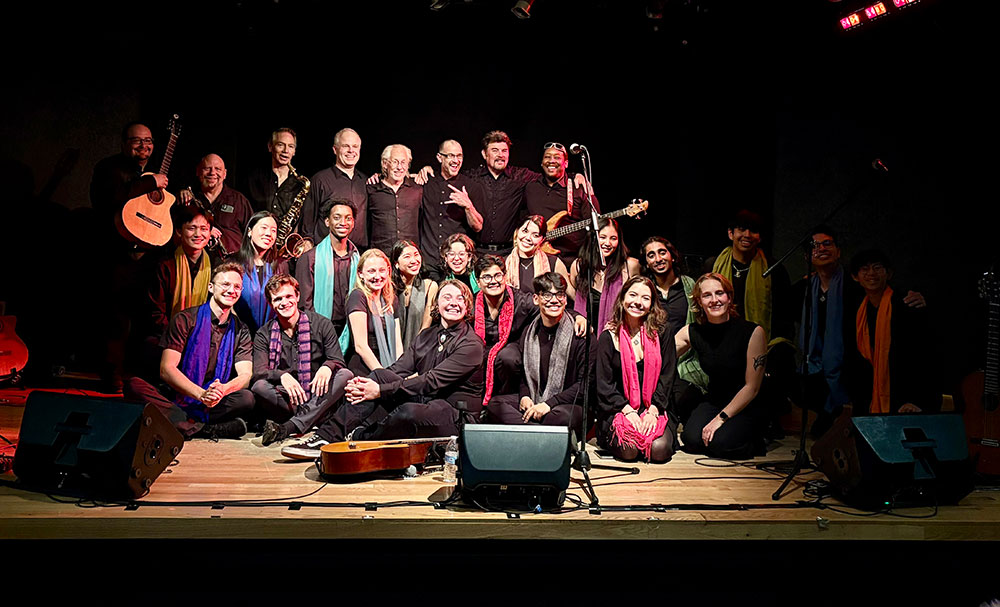 ¡Cosntelaciones! An evening of stories through song in O’ga P’ogeh. Back row from right to left: Michael Burt, David Manzanares, Michael Manzanares, Mark Clark, Andy Kingston, Kanoa Kaluhiwa, Chief Sánchez, and Rubén Domínguez. Middle and front rows include Maximiño and members from Stanford Talisman 2024-2025. Image credit: Manzanares Family Archives “Then flash forward to this year, and one of my dear friends and fellow alum from the group reached out and let me know that the current group was going to come to New Mexico for their tour this year. So my family and I helped them coordinate their lodging and their itinerary. They stayed and performed in Santa Fe and Ghost Ranch. They also did an assembly at the elementary school in Abiquiú and shared some music in the Pueblo –– to me, it felt that everything came full circle. This coalescence of my upbringing, my family, my time at Stanford, my time with Talisman, and my time in the Pueblo, they all coalesced and got woven together.” Maximiño is such a good storyteller, I could have listened to them for hours. Here is another one: “I mentioned earlier that my Grandma Ellie would tell my Dad, ‘If you can dream it, you can be it!’ From my Grandma’s saying, my Dad and Mom co-created and co-cultivated the idea of dreamseeds.” “Just like we have seeds that we plant in the garden,” Maximiño continued, “so, too, do we have the seeds of our dreams that we can plant out into the world, and they each need their own tending in order to grow and ultimately come true. Of my dreamseeds, I have two in particular that I would like to share right now––one for El Pueblo de Abiquiú, and the other for the world as a whole. My dreamseed for the Pueblo is that our people, both individually and collectively, will do everything we can to learn as much as we can about who we are, about our truths, and about where we come from. It's from these truths that we can have a strong foundation and be the best relatives that we can be, not only to one another in the Pueblo but also to all our relatives in the greater Abiquiú community, and all of our relatives in the whole world!” What Maximiño next told me made me happy. Maybe there is hope, after all. “My family and I are vehemently against all forms of oppression. I'm thinking of our relatives in Palestine and in the Democratic Republic of Congo and in Sudan, and of all the people who are facing colonization and ethnic cleansing and genocide… So my dreamseed for the whole world is the liberation of all colonized and oppressed peoples and for me to do everything that I possibly can to help realize this collective dream.” “My Grandfather would say (and my Dad continues to say) that every day we give thanks for the Breath of Life. I want to become so fiercely intentional such that I live and act each day knowing that every breath I take is not just mine. With every breath that we’re given, may we all come to understand the next right things to do, and may we then do them, even when they are scary, uncomfortable, or new. “May I become more grounded in my body. What is my whole body feeling? What is it receiving? What is it giving, and how does it fit into this beautiful, intricate, infinite multiversal web that we're all a part of?” Important questions indeed, worthy of contemplation, and somehow surprising to come from a young person. More wisdom and less Ego – that’s what I usually expect from older people, and often I’m disappointed. To meet somebody who isn’t preoccupied with their own success, who doesn’t dream of becoming famous but of serving their community – this doesn’t happen all that often. And yet, I’m not surprised to find such a person in Abiquiú, which has plenty of unconventional, community-oriented people.
We will continue this conversation at a future time; I’d like to learn more about the traditional Matachine dances, and Maximiño will consult with the elders who have made their revival in Abiquiú possible about what can be shared, as well as the most respectful and considerate way to share these stories. And I definitely want to hear more stories from Maximiño’s abuelitos. It was such a pleasure to listen. I know you have many commitments, Maximiño, and I’m grateful for the time you gave me. May all the flowers keep blooming for you! Interview with Ghost Ranch CEO David Evans By Jessica Rath Countless visitors from all over the United States come to Ghost Ranch every year, either to spend a few weeks during the summer, staying at a cabin and participating in one of the many programs offered, or for a day of outdoors adventure when they’re driving by on Hwy 84. For many of us who live in or around Abiquiú, Ghost Ranch evokes recollections of exceptional hikes. I’ll never forget the first time I made it to the top of Kitchen Mesa, all by myself, and the exhilarating views that took my breath away. I could see my minuscule car in the parking lot, an impressive testimony for the height I had climbed. It’s a region of glorious beauty which has captivated young and old for many years. Now imagine that you spent many joyful summers as a kid at Ghost Ranch, and you return as an adult lots of years later, to work there. Sounds amazing, doesn’t it! That’s what happened to David Evans, who started as Ghost Ranch’s new Chief Executive Officer in January 2024. He was kind enough to meet with me recently, when he told me about the long journey that brought him to Abiquiú. David grew up in Salina, Kansas. The first time he came to Ghost Ranch was when he was five years old and his mother taught a photography class here. And then he and his parents came every summer for years, sometimes they would drive here from Kansas, and sometimes they would take the train to Lamy. While his mother taught photography, his father took all sorts of different workshops. “So I grew up playing here every summer and had lots of wonderful first experiences here,” David told me. “The place has been really special to my whole family for years. My sister later worked on the college staff here. Professionally, my career has been in international relief and development, and so I lived in the Middle East for a long time.” How exciting! I asked David to tell me more. “I lived in Lebanon for a while, then in Iraq and in Jordan,” he continued. “I moved to Iraq in 2008 and I was there for about five years, and then I worked in Lebanon, and for a shorter stay in Jordan. I met my wife in Iraq, she's Scottish, and we were both doing aid work there.” I asked David to define what that entailed. What does it mean to do aid work? How did you help? “When we were in Iraq, the biggest program I worked on was designed to help Iraqis engage in local government,” he explained. “It was a program to help foster deeper engagement in the decisions that were affecting them through the government. It also supported local nonprofits, and then there were a number of different ways we would help people engage with their local leaders. Also, it involved delivering basic humanitarian needs, such as water, to different communities. We had a number of educational programs, programs to teach girls how to read, for example.” “Later, when I was in Lebanon, I had a regional position, and at that time, the Syrian war was in full swing,” David continued. “Lots of people were being driven across the border. And so the organization I worked with had operations in all the surrounding countries to help with refugees.” Now that the U.S. government stopped all support for overseas aid organizations, you must feel particularly bad because you were involved with some, I commented. “My wife and I both were just devastated, because the communities that we were working with desperately needed assistance. The result of years and years of effort was just wiped out. We all helped, and those communities will be suffering for sure,” David confirmed. That's really too sad. I didn’t want to dwell on this and asked whether he came back to the United States with his wife, after their time in the Middle East. “No, first we were in Southeast Asia for a while, for about five years,” David corrected. “We were in Myanmar, in Burma, and then Thailand. So we were working in Myanmar, and then after the coup, we had to leave in a hurry, and we moved to Thailand. Then we were working in Thailand, and I was eventually working for EarthRights International, a human rights and environmental defense organization. We lived in Chiang Mai, Thailand.” “We moved from Chiang Mai, Thailand back to the United States in January 2024, so a year and a half ago,” David continued. “I've got two boys, they're in second and fourth grade at Abiquiú Elementary. The move has been a big transition for them. Most of their memories are from Thailand and Myanmar!” What was different for them, I asked. “Well, I had to show them how to tie their shoes and wear jeans, for example,” David told me. “They were wearing flip flops and shorts their whole life.” I’m convinced that it's good for a young person to be exposed to many different cultures and languages and David confirmed that they're doing really well, playing basketball and soccer and things like that. Abiquiu Elementary is a lovely school, he said, so they're doing just great. And how did he end up at Ghost Ranch, I wanted to know. “When I was working in Thailand, the Chair of the search committee to fill this position emailed me out of the blue with this opportunity,” David told me. “He is a good friend of my mother, and I was very excited and applied for it. I really wanted this job, and when I got it we made the move back to the US.” And what does it entail to be the CEO of Ghost Ranch? What are your obligations and responsibilities, I asked. David’s answer was impressive. “Well, we're an education and conference center, and we offer wonderful programs in the arts, spirituality, and social justice. There are more than 100 rooms here, and we have guests all year round, but we're especially busy in the summer. We also offer a wonderful youth program, and part of that is a community camp for Rio Arriba County residents. In the summer we offer swimming lessons for kids who live around here. And we have a wonderful dining hall and a library. There are two different museums, an archeological museum and a paleontological museum. We have great hikes here. We've got a staff of about 55 people year round, and that goes up to 85 in the summer. We expand a lot in the summer in order to take care of all of our summer guests, and so my job is to oversee all of that.” He continued: “One of the main things we're doing right now is the construction of a large scale solar array. We'll be breaking ground with that soon, and then about 10% of our electricity will be solar. We're really excited about that. It's very important to us that we're good stewards of this land. For example, we're taking care of this field right out in front of us here.” David pointed to the big lot outside, in front of his office. “We got that ready to plant so that it's lovely and green soon. Taking care of our environment is top priority, and people learn that while they are here, that's just part of the whole experience.” My next question had to do with continuity and innovation. As the new CEO, what is his vision for the future? David mentioned a number of exciting ideas. “We're really committed to adding in more social justice work that helps us embody our values. We're an inclusive place. We care a lot about the sustainability of our land and our resources, and we feel that this is a place where people can gather a lot of strength from. We want to make sure that we give people ways to move that strength with them, into their own communities. That's been an important focus for us. And over the last few months we've been looking for new and better ways for people to experience the ranch. We're opening a café in about a week, and that'll be up in our headquarters building. Right now we have a wonderful food service, but it's only for overnight guests. With the café we'll have a place for day visitors to join us for lunch and coffee.” “What other changes can I talk about? We want to add new rooms, so we're embarking on a fundraising drive to build new rooms. We have more people who want to visit than we have rooms, and so that's an important project for us on the horizon. And we are really focused as a team on making sure that we're a very welcoming place for everyone. It's been a big, big focus of ours for the last year.” I asked about the flood in 2015, when heavy rains washed some of the buildings away. “We did a lot of work to restore that waterway,” David answered, “and we've trying to make sure that we've got the space to continue our primary classes. The classroom where we did our pottery classes was washed away, so we've been working to replace that.” Where does the funding for all this come from, I wanted to know. Is Ghost Ranch an independent organization, I asked. David explained: “The Presbyterian Church owns the land that we're on, and the National Ghost Ranch Foundation runs all of our programs. It's independent, but has a really strong and close working relationship with the Presbyterian Church. They have seats on our board and are the land owners. They're wonderful landlords and it's a very close collaboration, although the National Ghost Ranch Foundation is independent.” “We really appreciate and respect our Presbyterian roots and values. We want to maintain alignment with those values because those are our values as well. We want to make sure we're looking for ways to bring those values to life. We are open to everyone. We want to be a place for everyone.” Ever since my first hikes at Ghost Ranch in 2001 I’ve been impressed by the generosity of the Presbyterian Church to allow people free access to their land. There were no “Private Property” signs, no fences. This is so kind. There is Chimney Rock, Box Canyon, and Kitchen Mesa. Have you added any new hikes, I wanted to know. “Yes, we have the Piedra Lumbre Trail, out in the Painted Desert, which is beautiful. And then we have a great trail called ‘On a Lark Trail’ and the ‘Matrimonial Trail’. So those are some wonderful hikes that we have. All the trails you mentioned are on forest service land, we've got a really good collaboration with Carson National Forest who work on those trails, together with an AmeriCorps team. We just restored a significant portion of the Chimney Rock Trail.” When I was driving north on Hwy 84 to Ghost Ranch, looking at the gorgeous rock formations, I started musing. They look so static, always the same. But they do change too over the many thousands of years, we just don’t notice it. Do you have classes about geology, I asked. David responded: “Yeah, we do. We have some great guided hikes that focus on teaching people about the geology of the area.” “We invite all of our neighbors from Rio Arriba County to come and visit,” David added. “We have a daily use fee, but Rio Arriba County residents don't have to pay. I want to make sure that everyone knows that we’re open to all, and I'd love to have all our neighbors come visit, check out our hikes, and join us. We like for people to sign in when they use the trails, just in case there's an emergency, but people are free to use the trails.” How many people come to visit in the summer, I asked David. “We had about 8,000 visitors so far. We often have over 20,000 day visitors a year,” I learned. “We now have programs year round. It's a really cozy place in the winter, and we’re working on expanding our year round offerings.” “Most recently, we had programs in the middle of January, and those are mostly art focused. It’s really a lovely time to be here. And then we host the Blossoms and Bones concert in September, so that'll be in the Fall, it's a three-day Music Festival. (Please click the link above for more info.) Also, David wanted to make sure people know about the Summer community camps for kids, one in June and one in July (again, check out the links for more info, low cost for Rio Arriba residents). And they offer swimming lessons this summer, where kids learn to swim – he learned to swim here, David told me. No more foreign travel for him and his family – he loves being back, and I bet that’s great for Ghost Ranch in terms of stability and continuity. David is very busy, and I’m grateful he took the time to talk to me. Make sure you visit Ghost Ranch this summer, and bring the kids! |
Submit your ideas for local feature articles
Profiles Gardening Recipes Observations Birding Essays Hiking AuthorsYou! Archives
October 2025
Categories
All
|
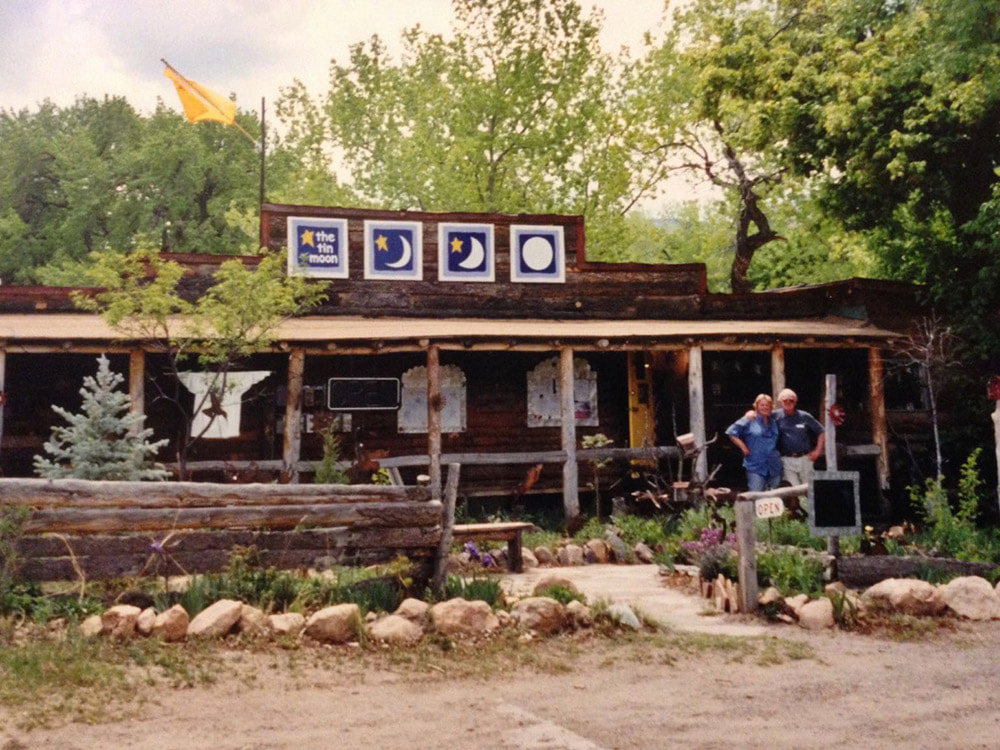

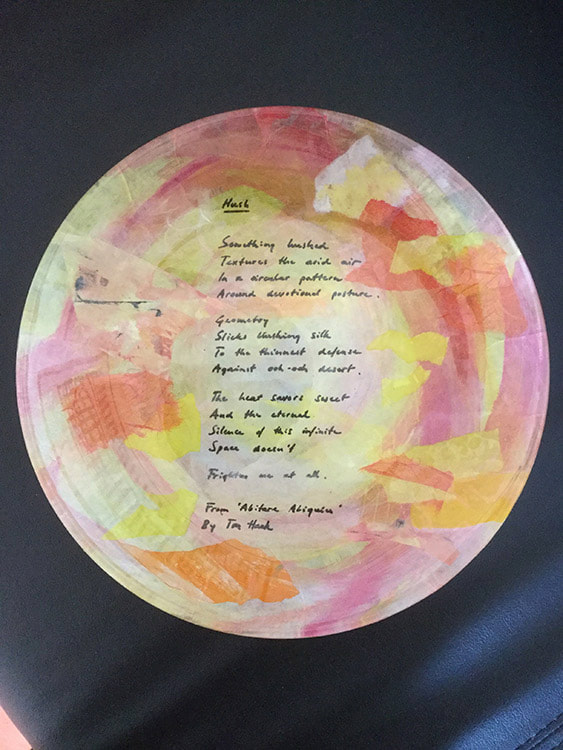
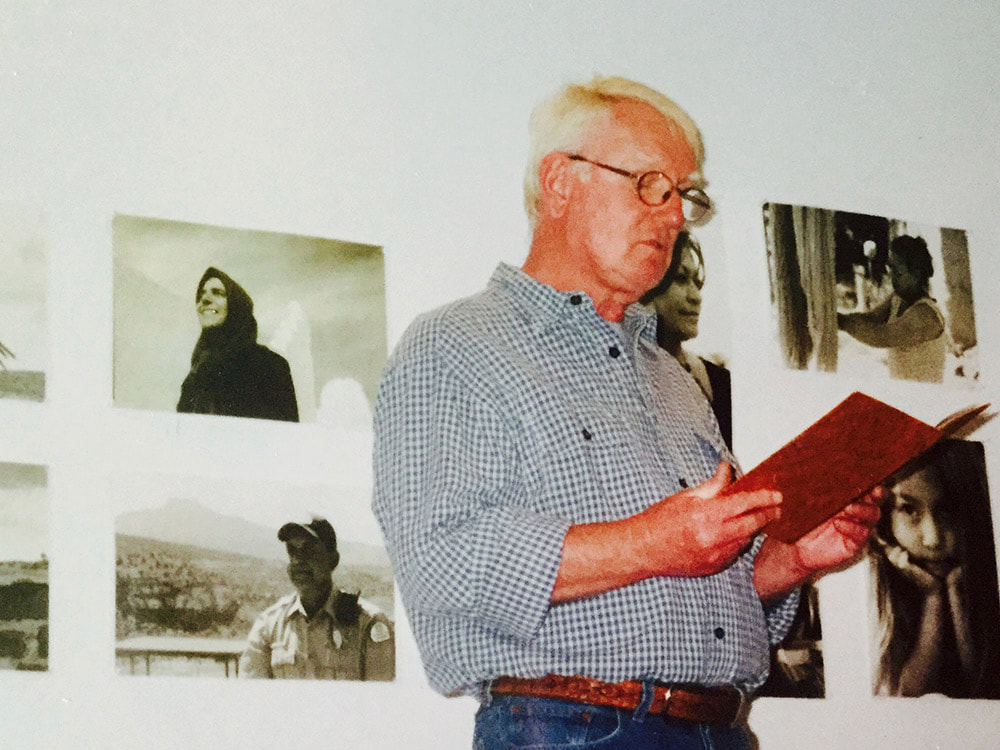
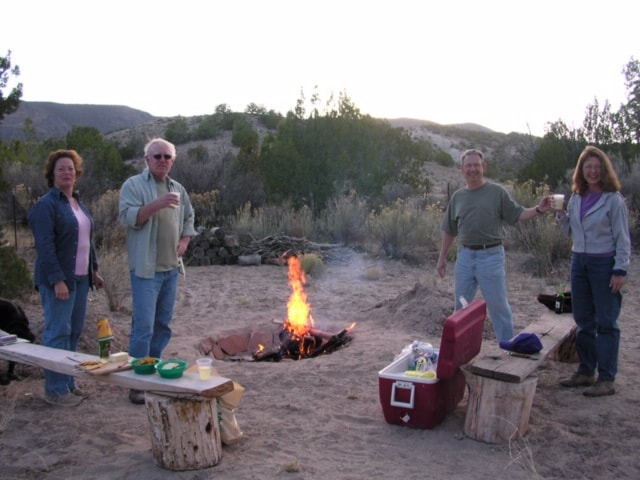
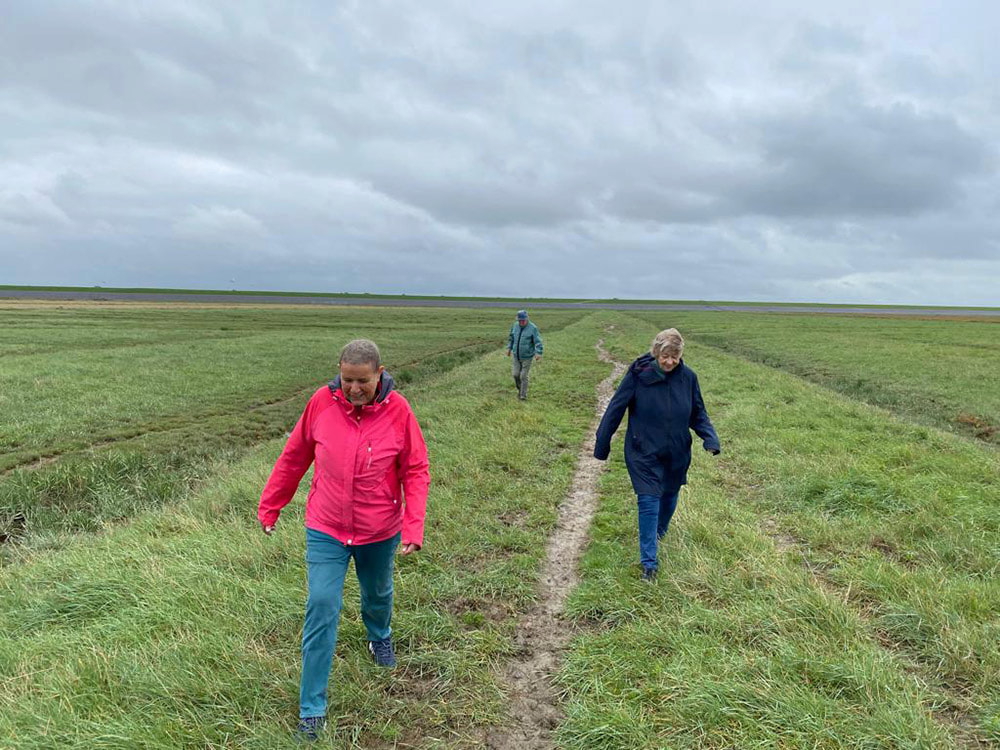
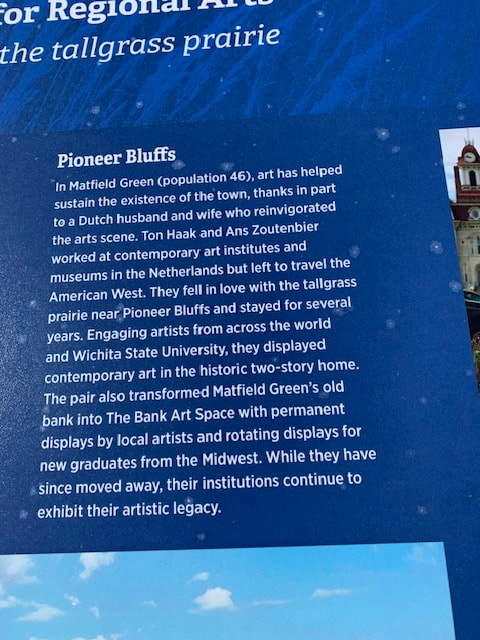
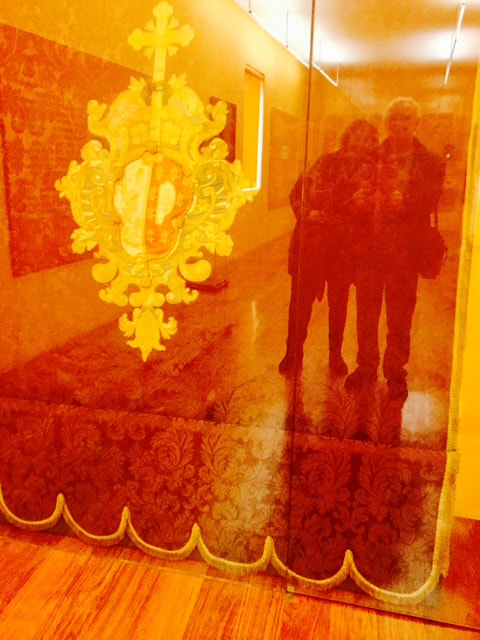
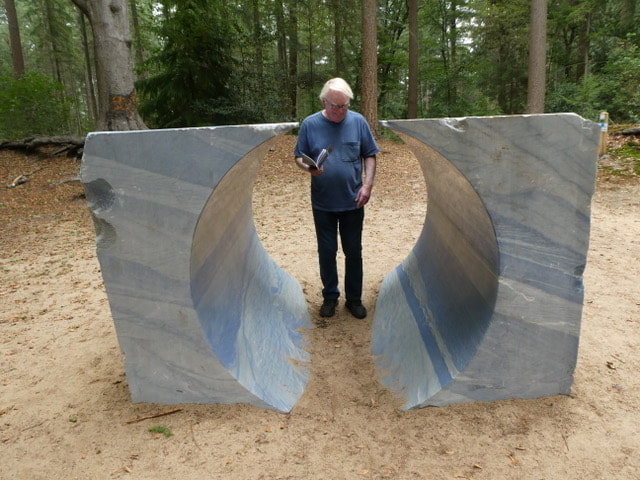
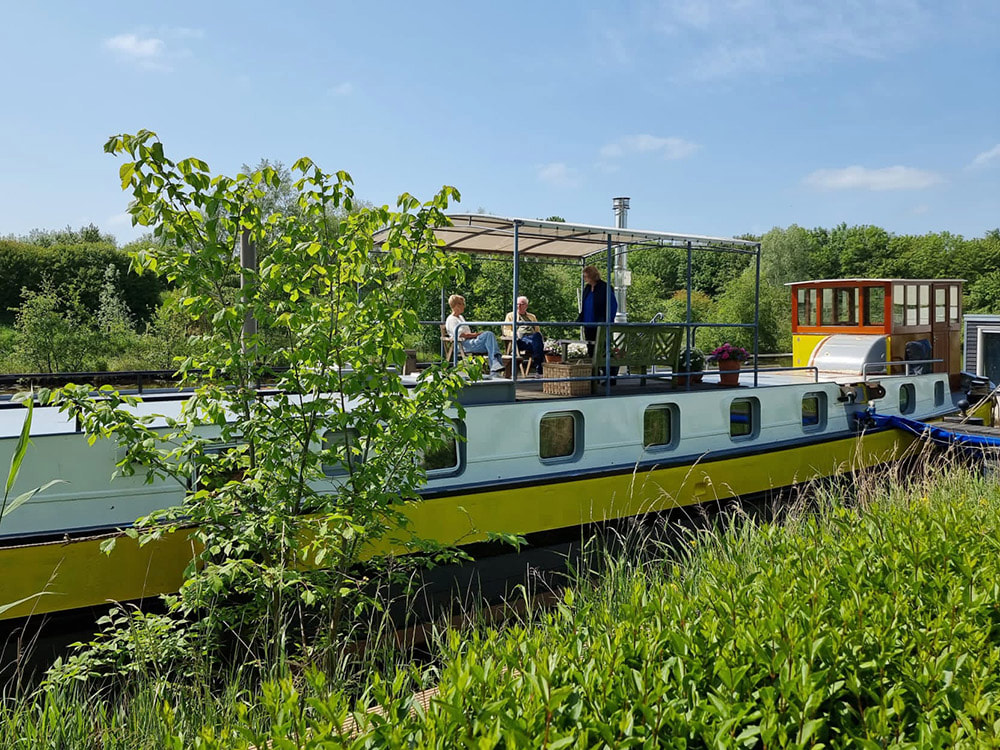

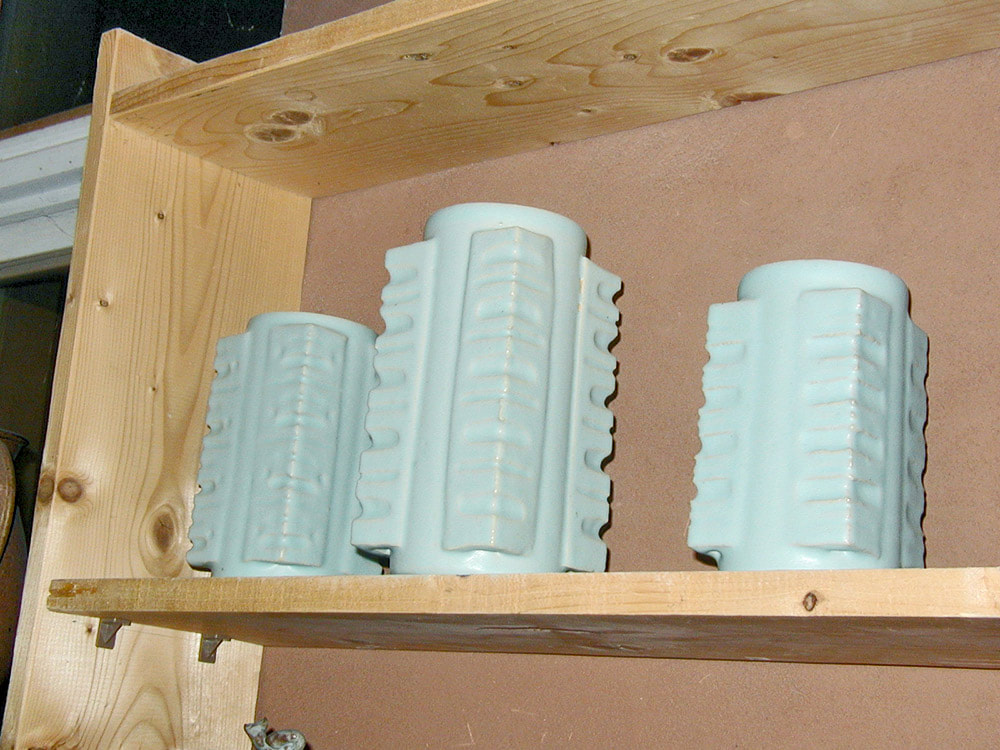

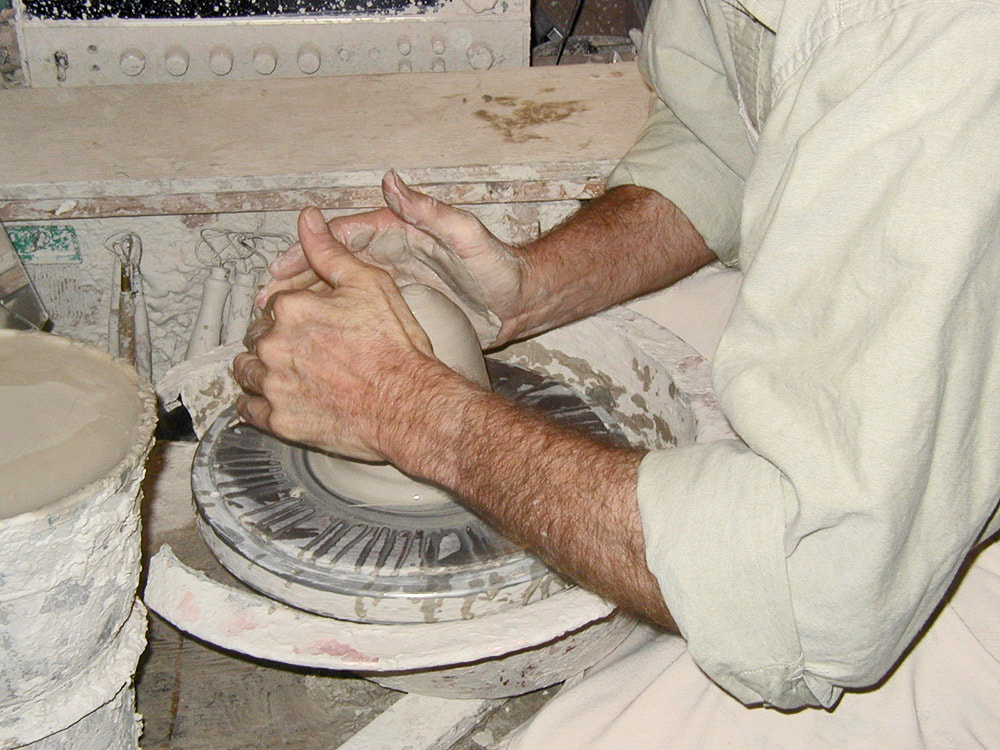
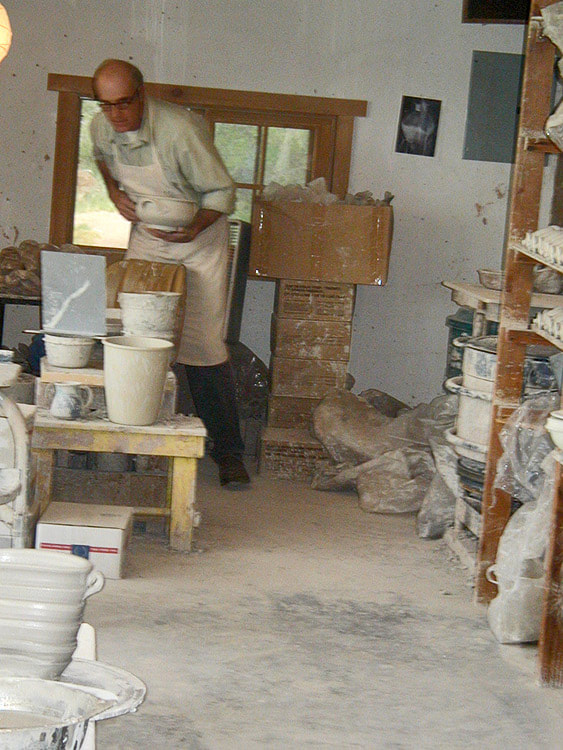
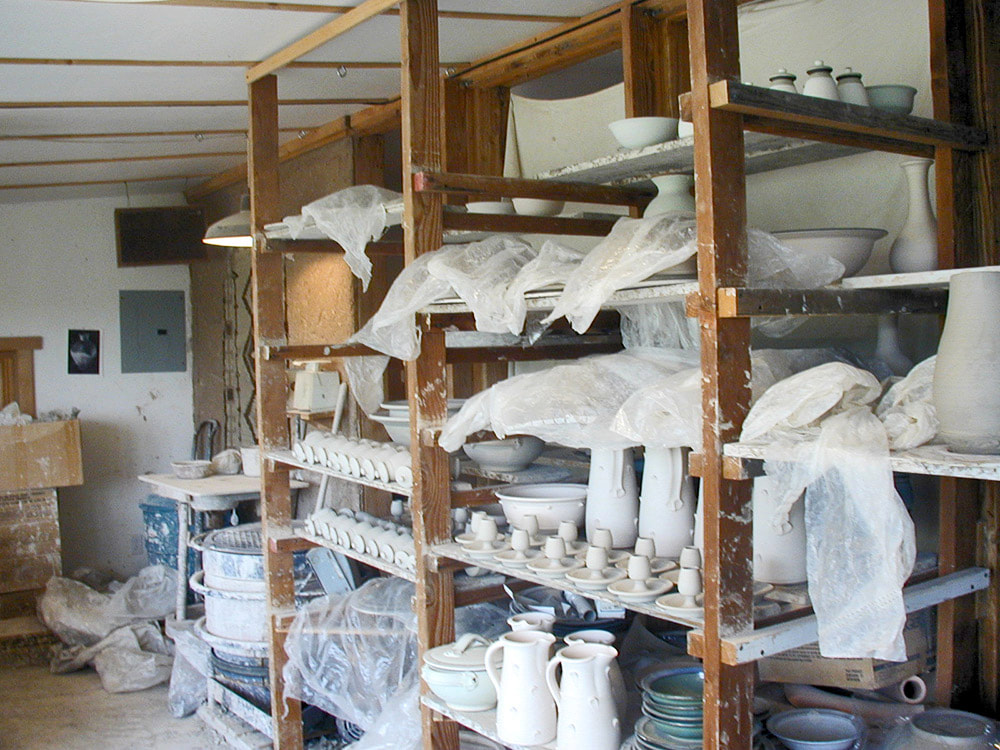

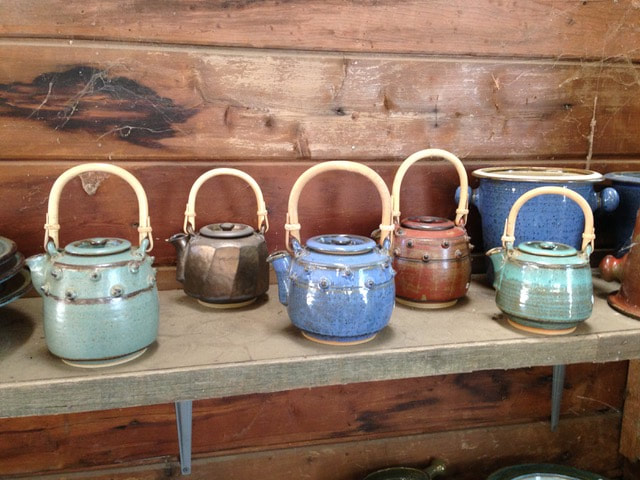
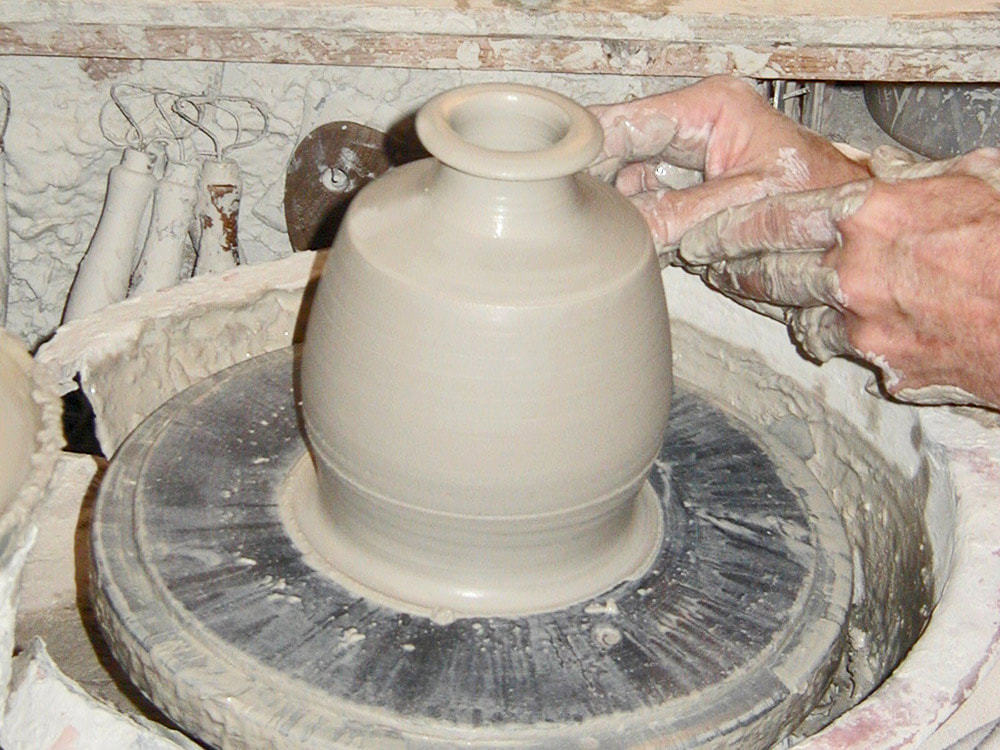
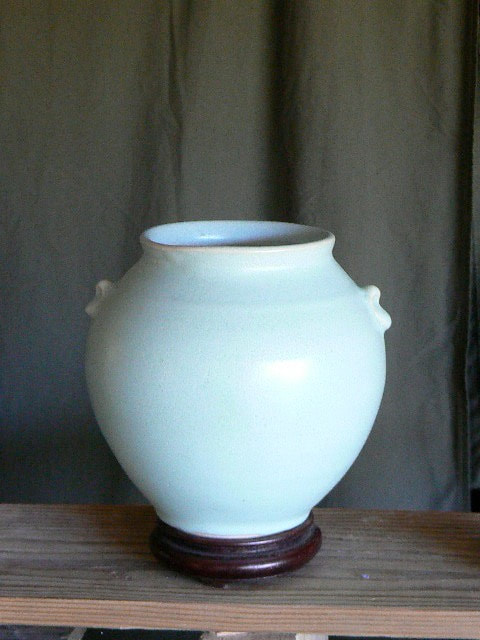


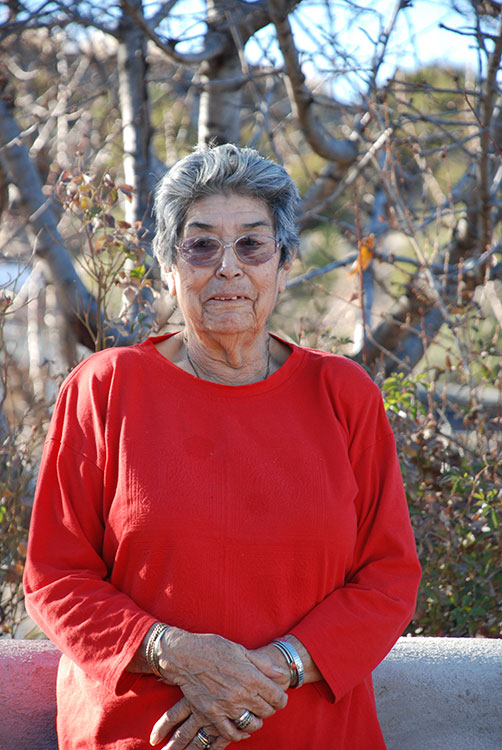
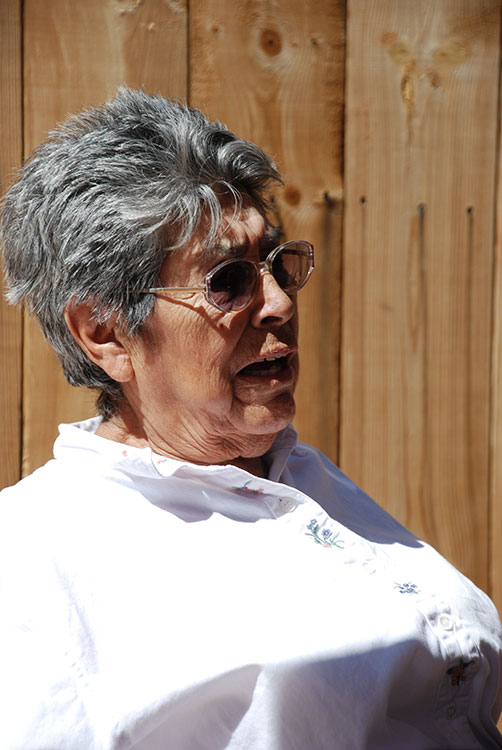
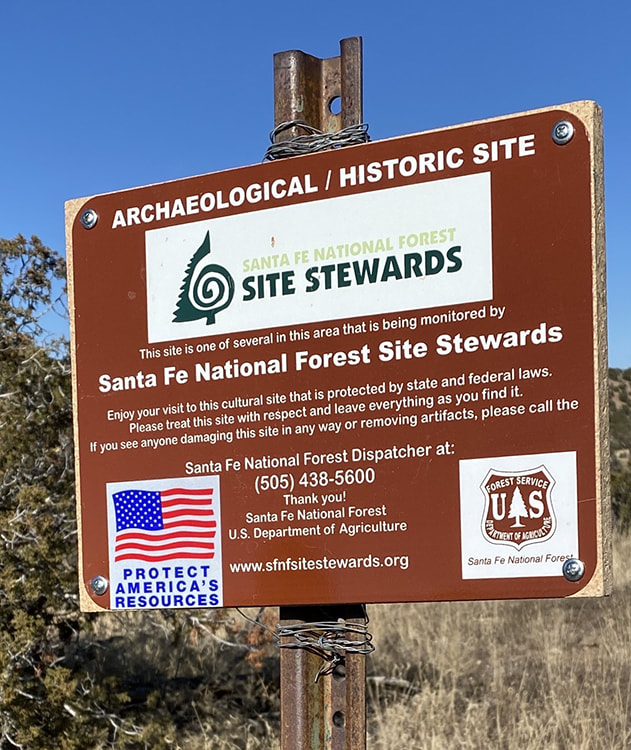
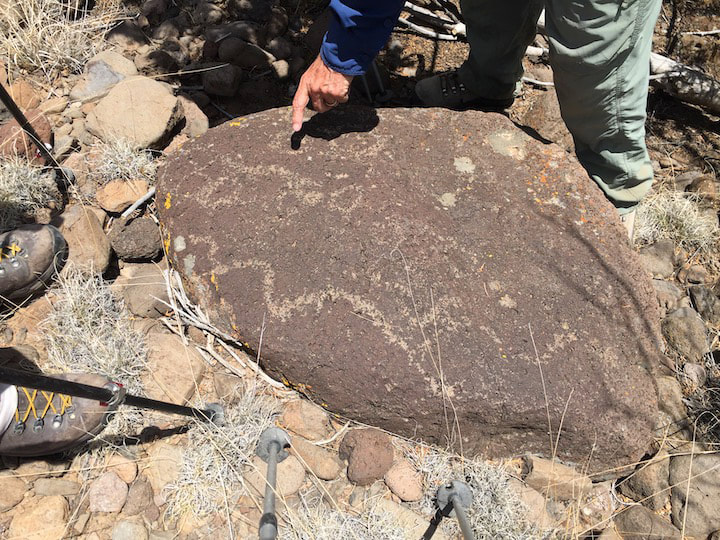
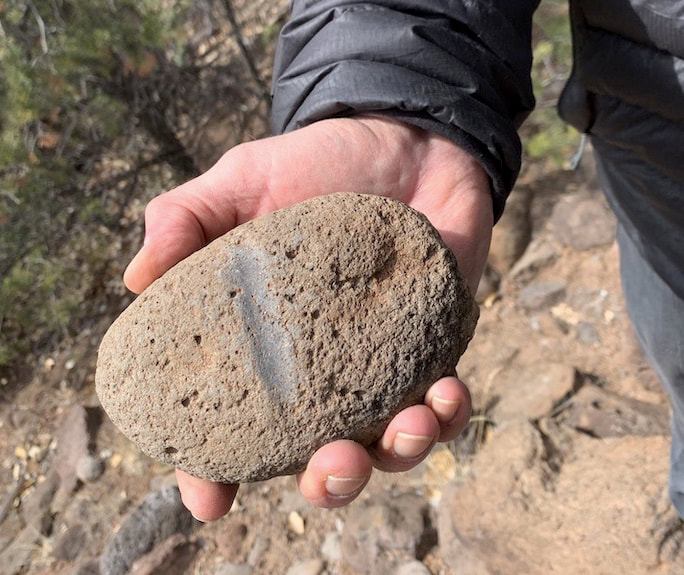
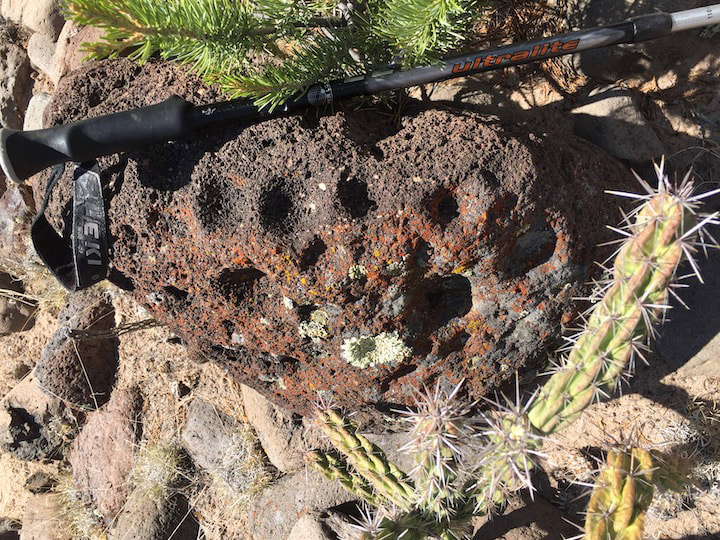
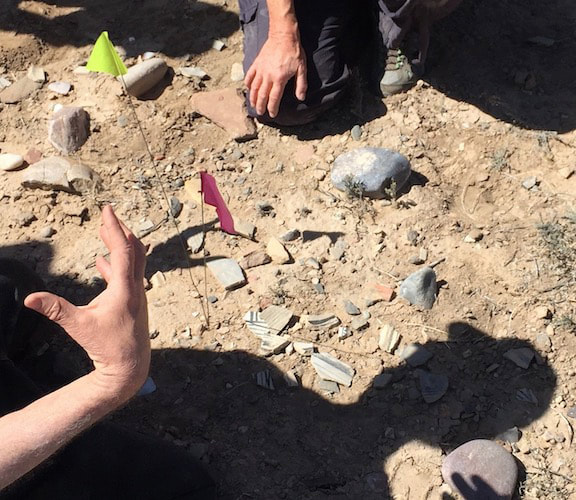
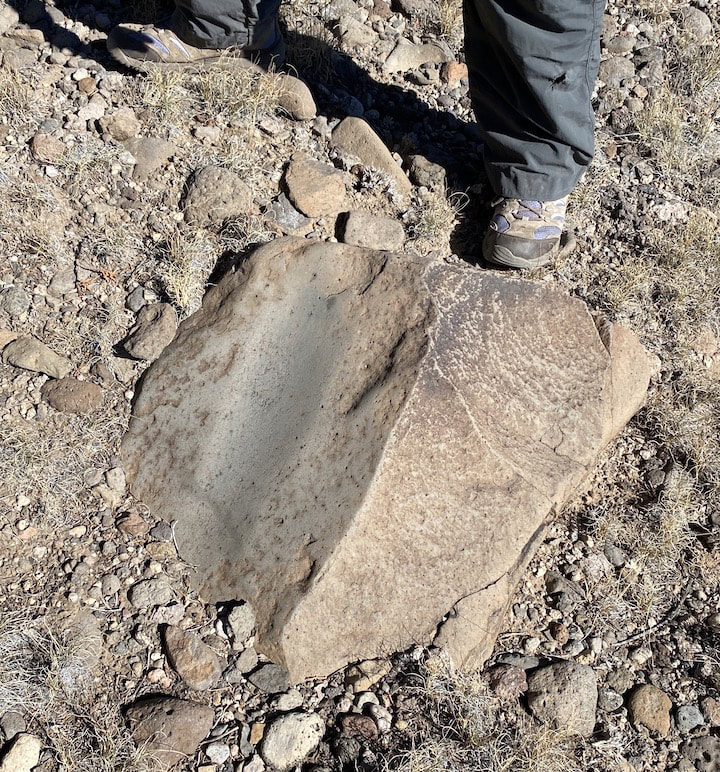
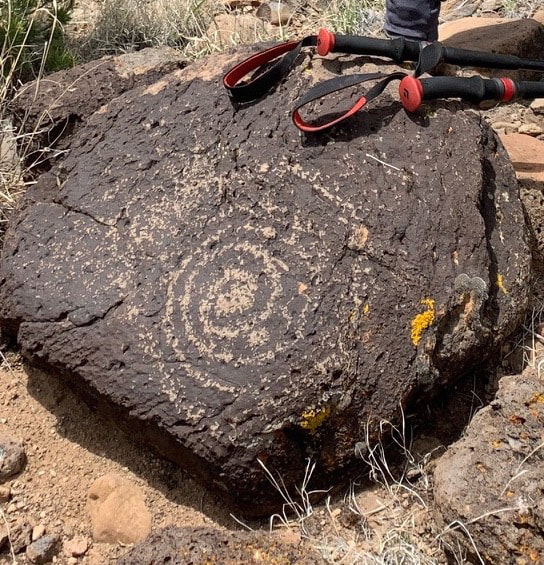
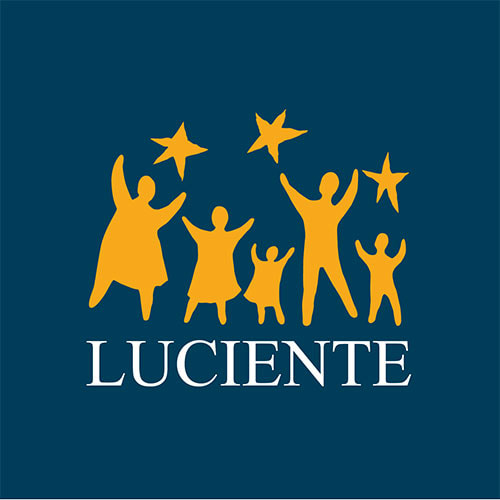

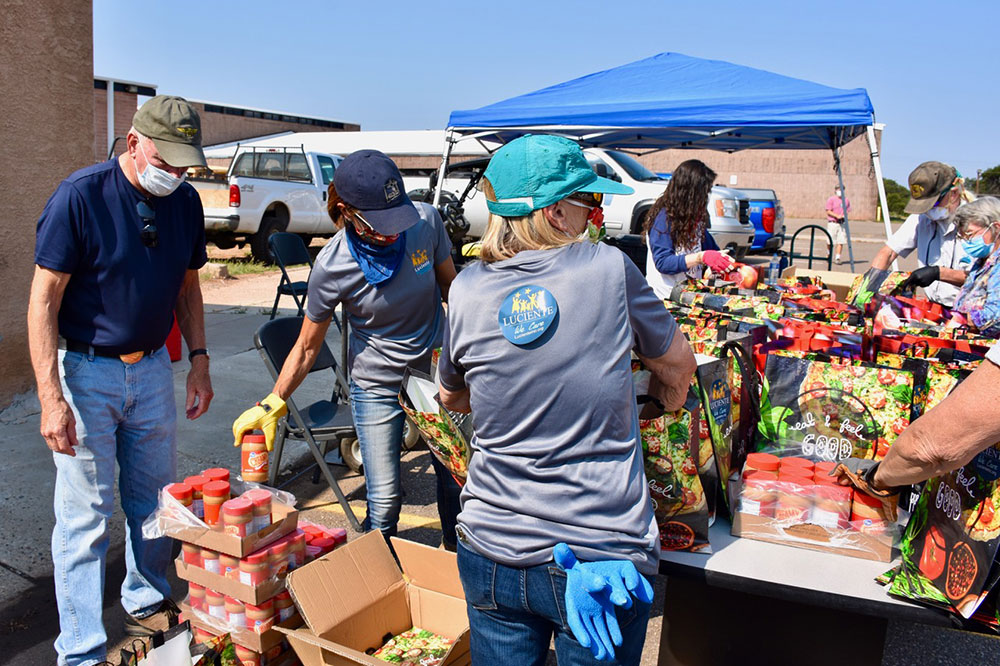

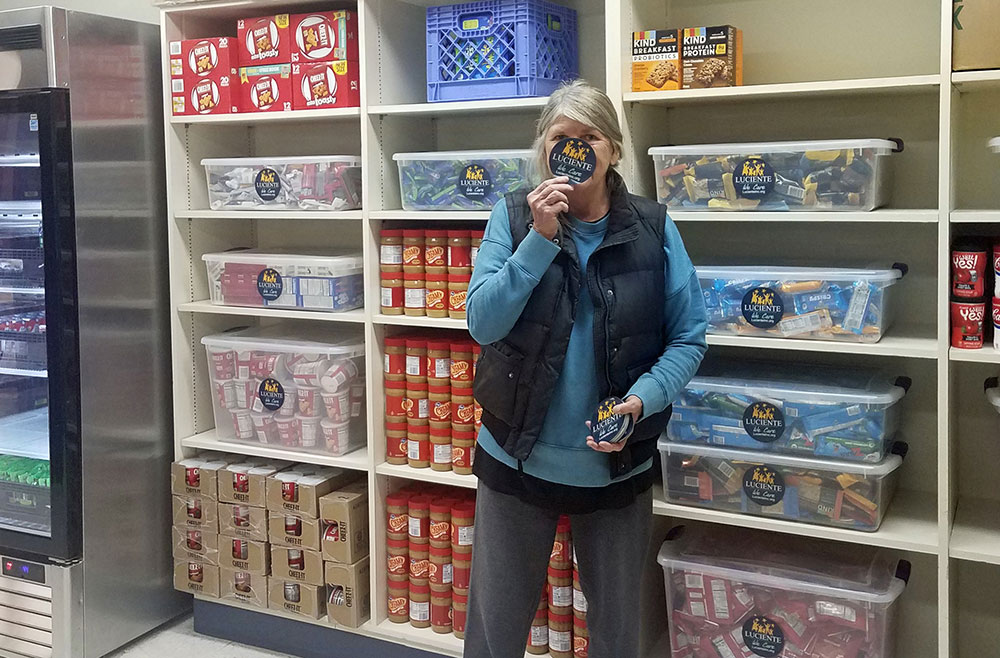
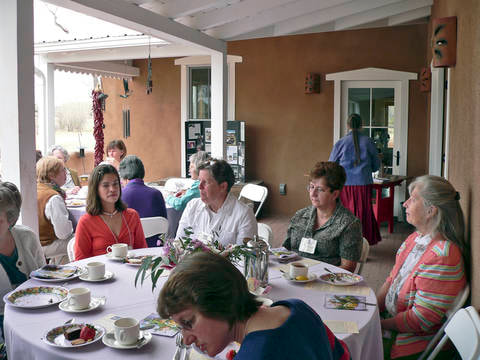
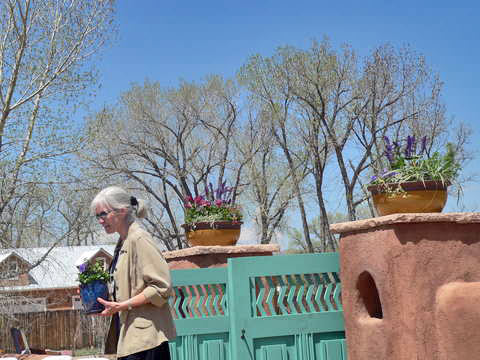
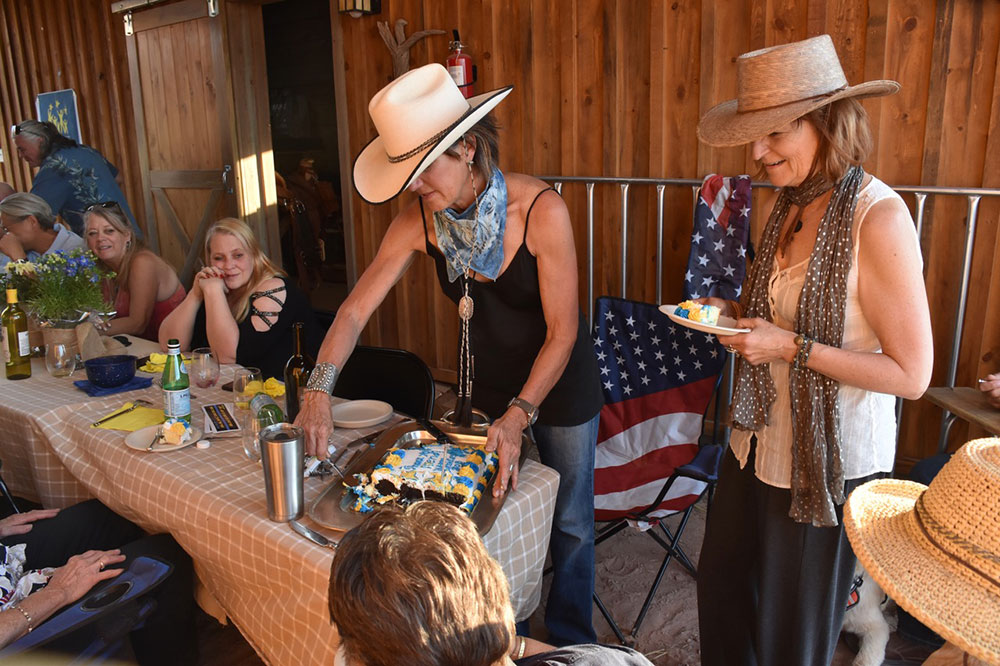
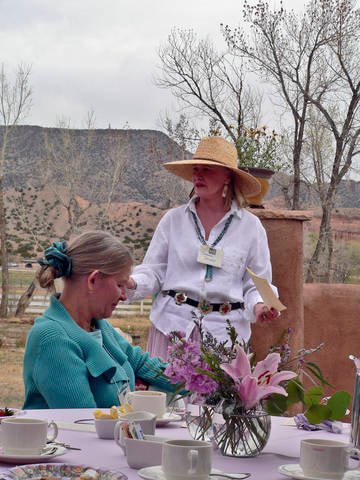

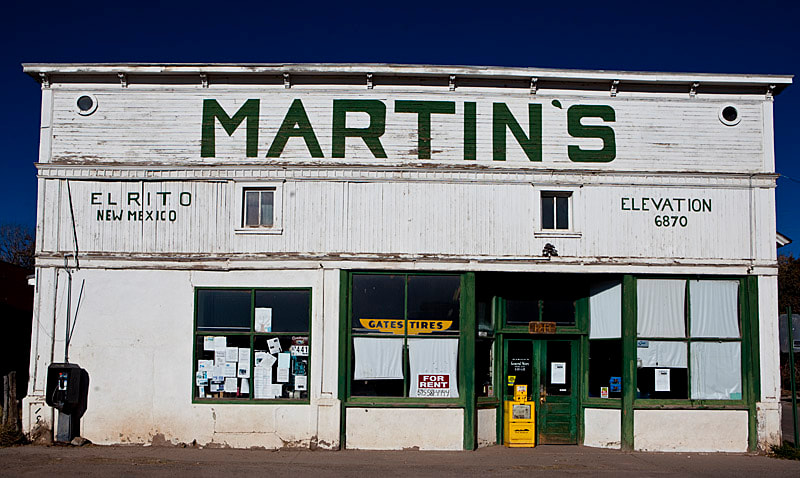
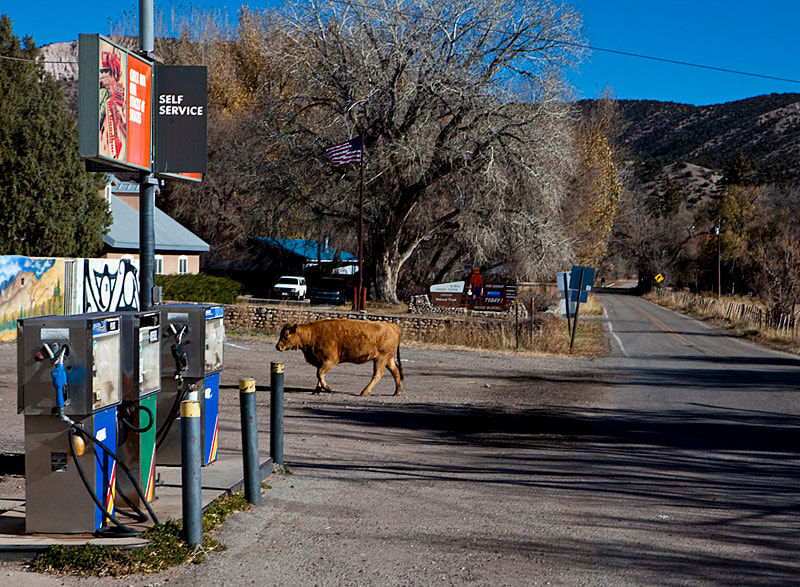

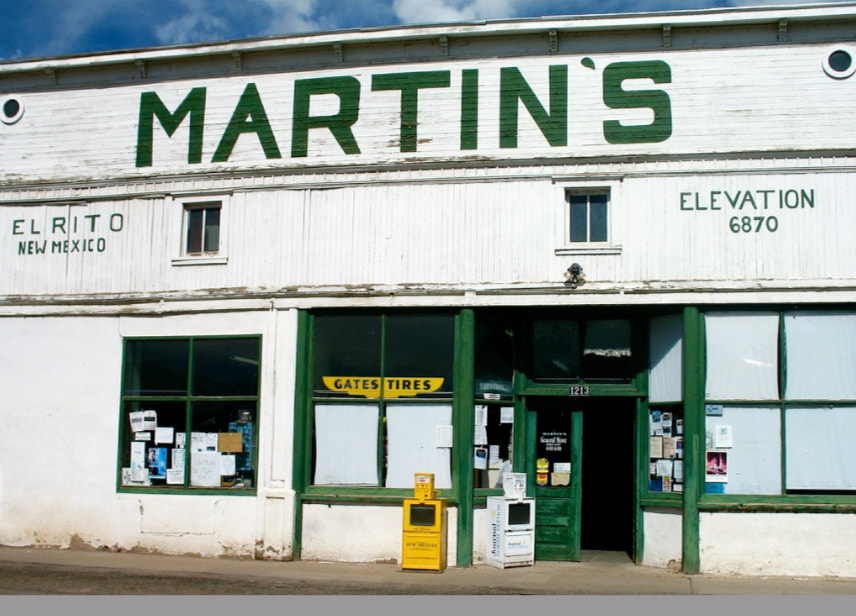
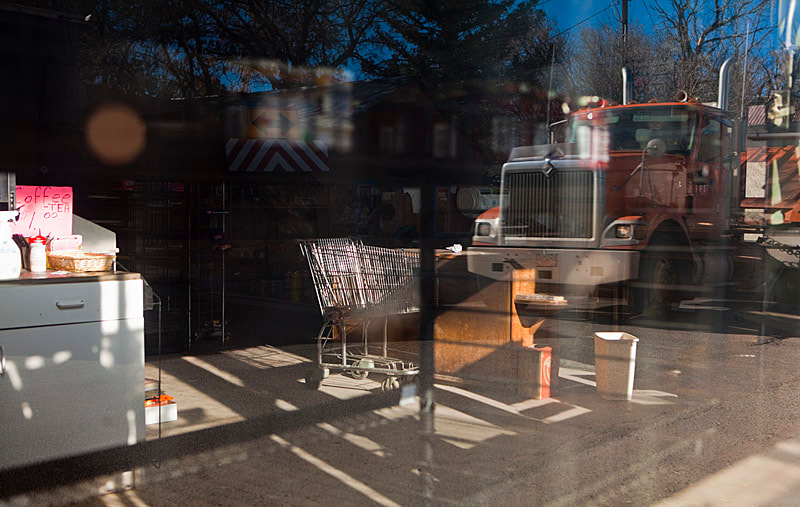

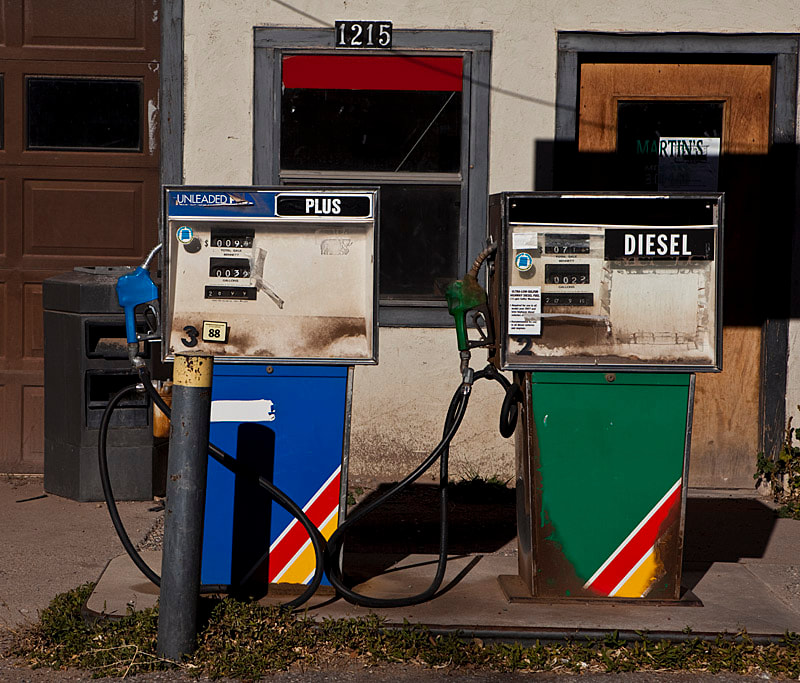
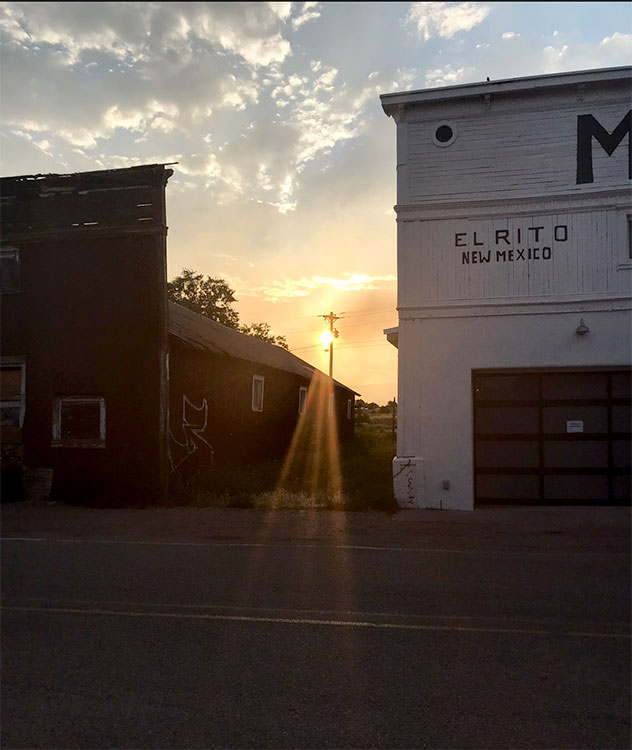

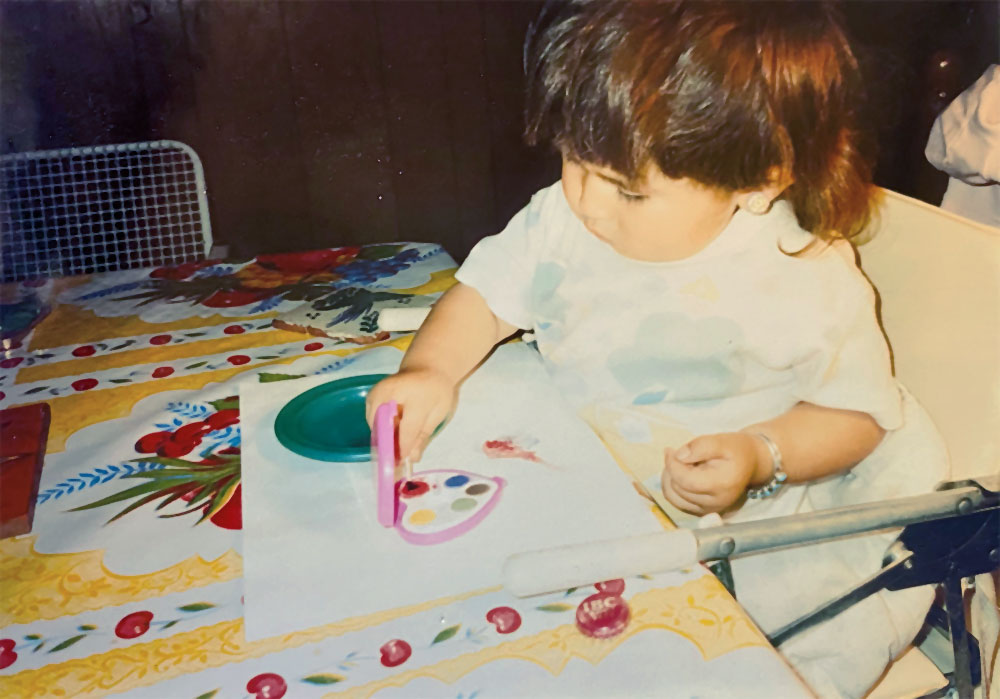
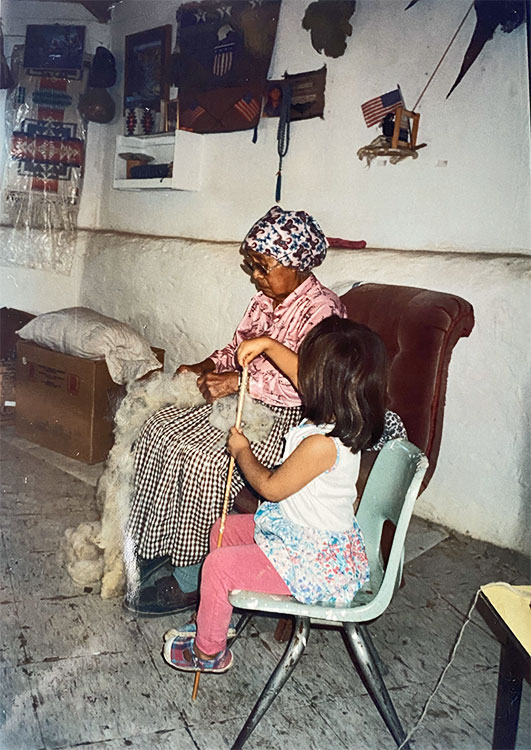

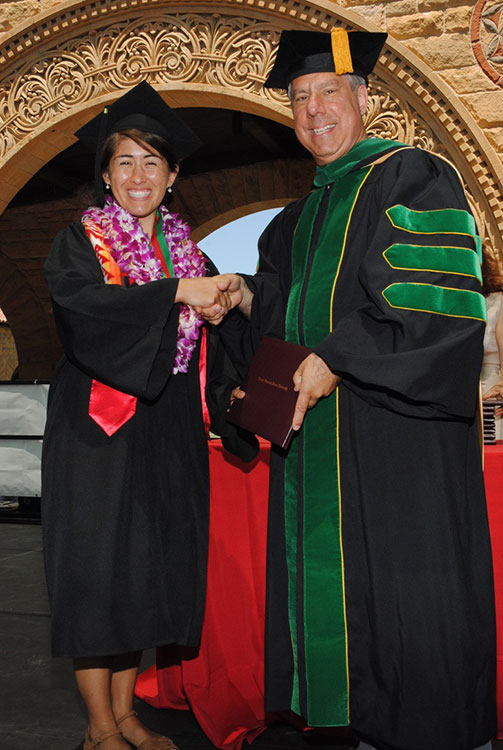
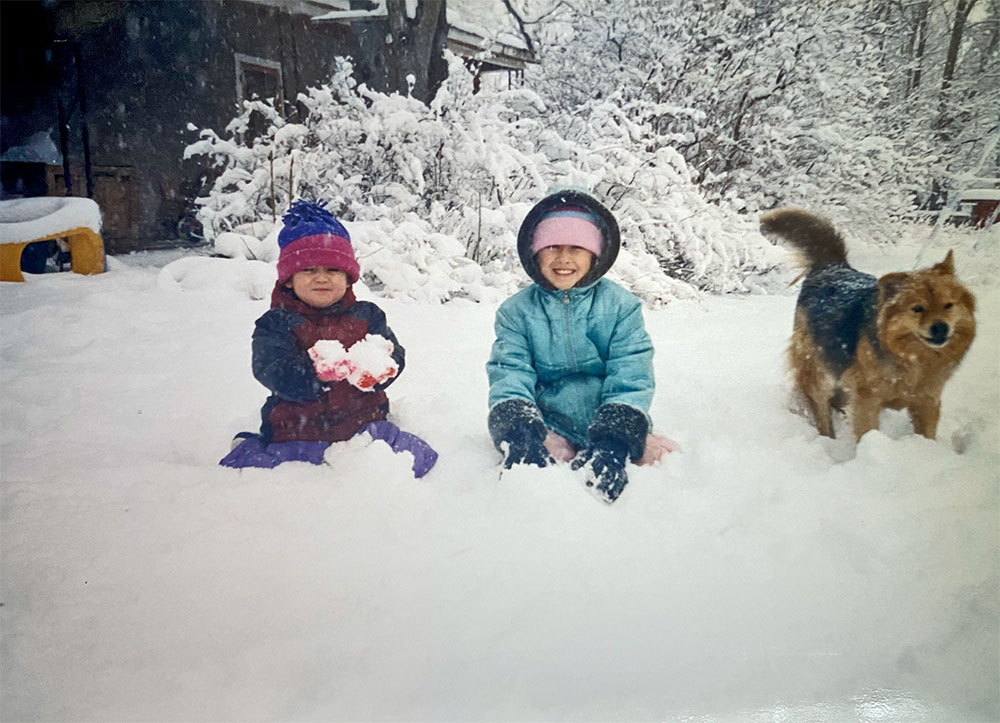
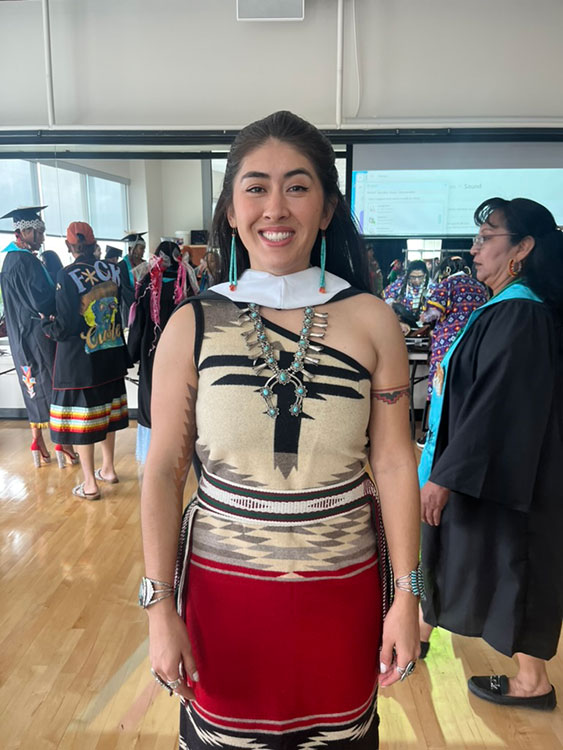



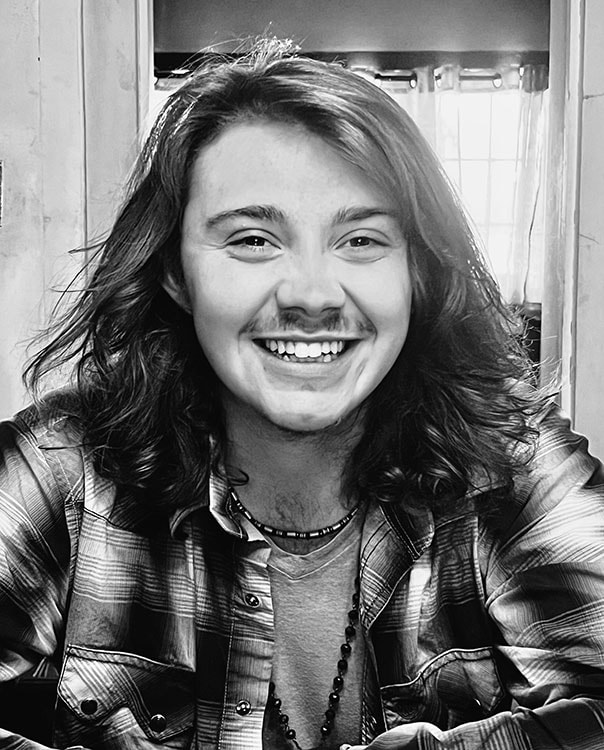

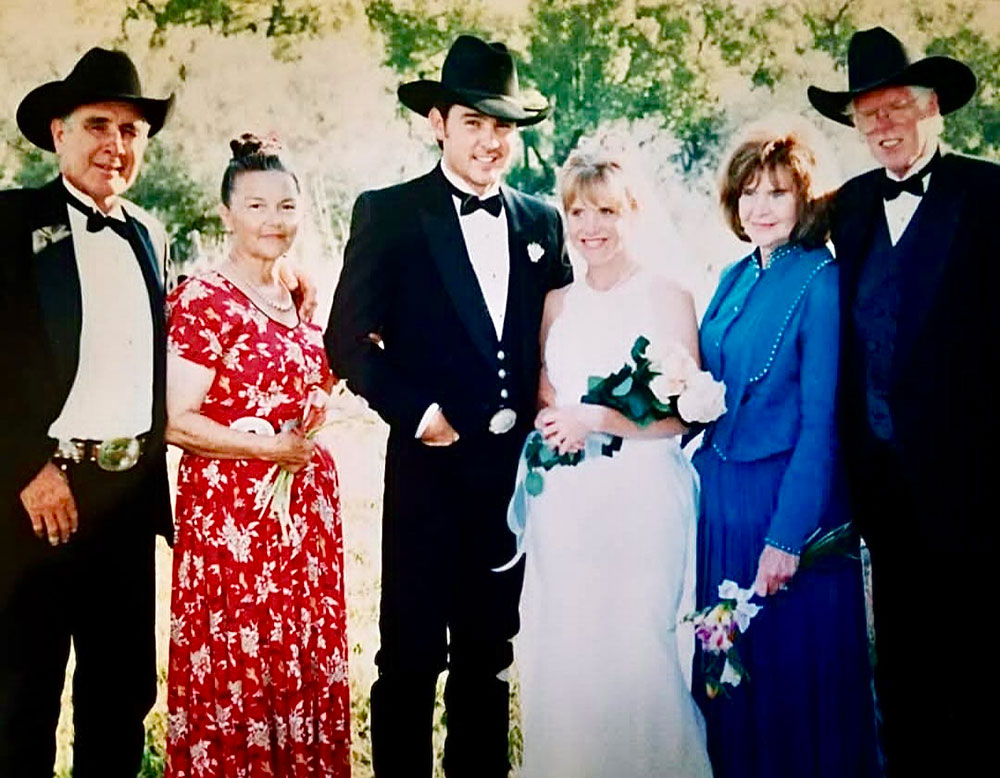

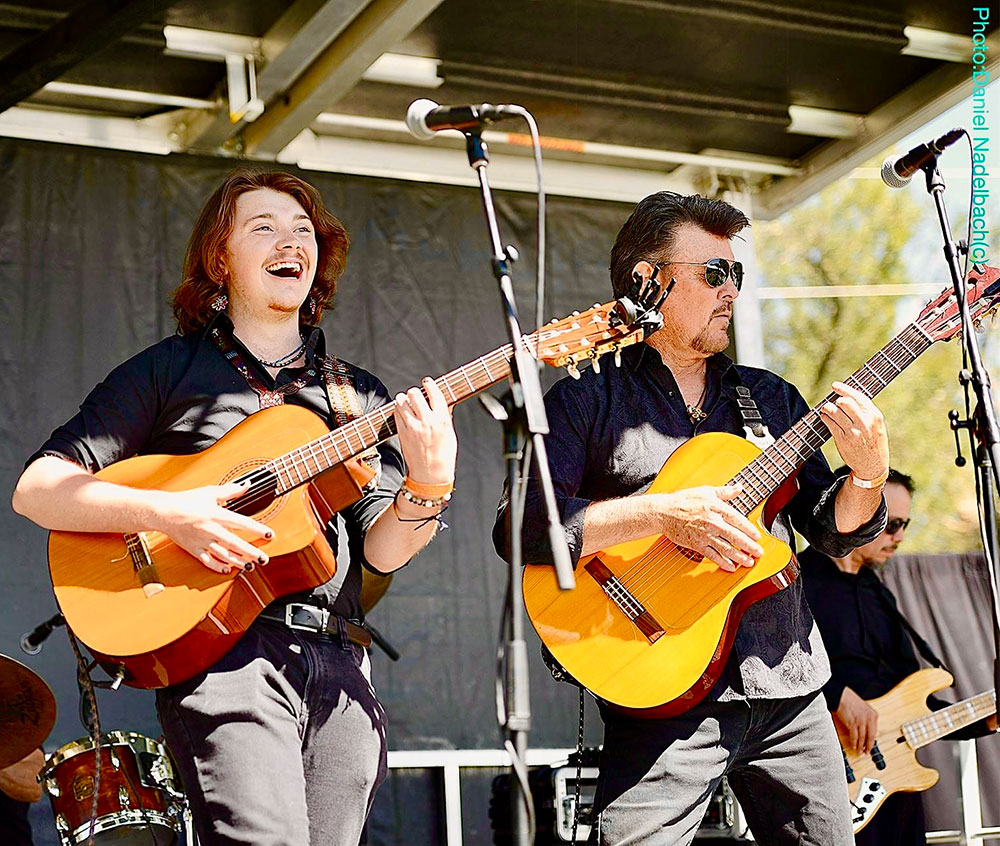


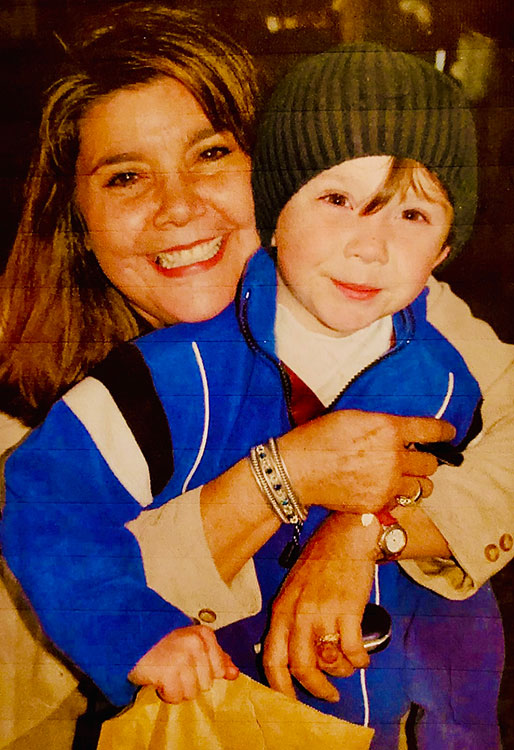



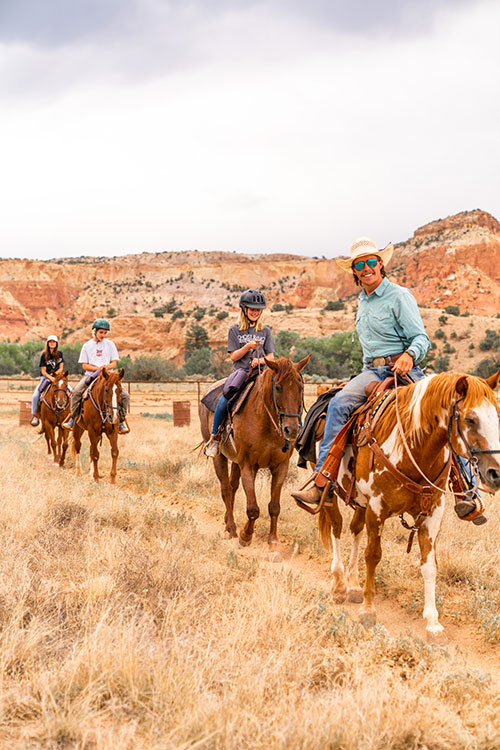
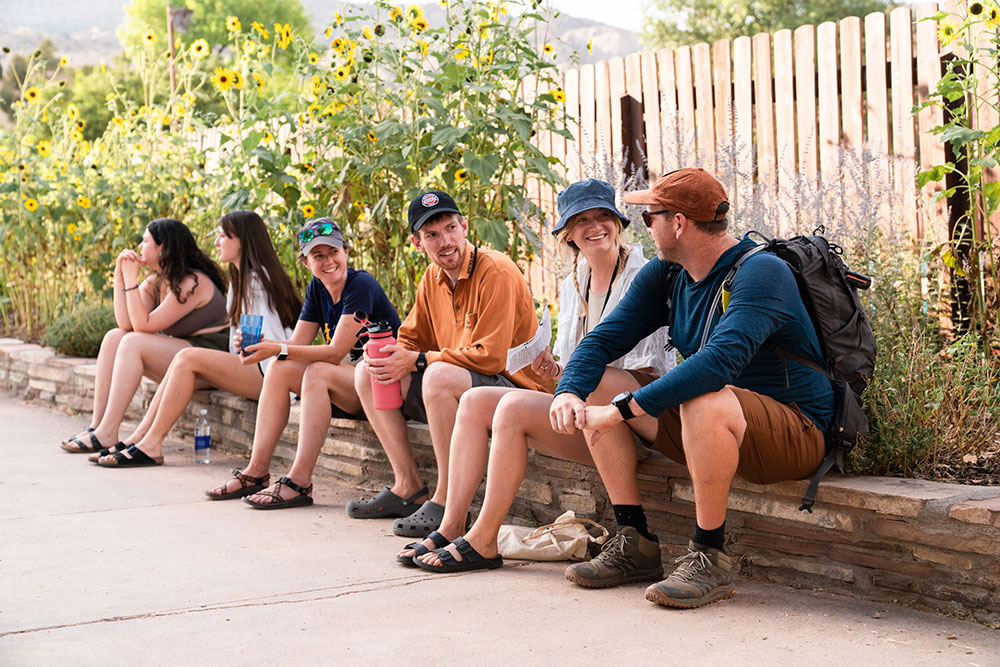
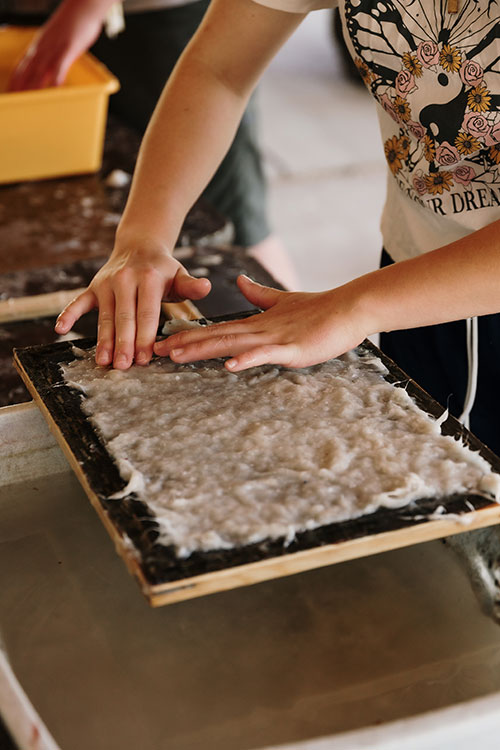





 RSS Feed
RSS Feed